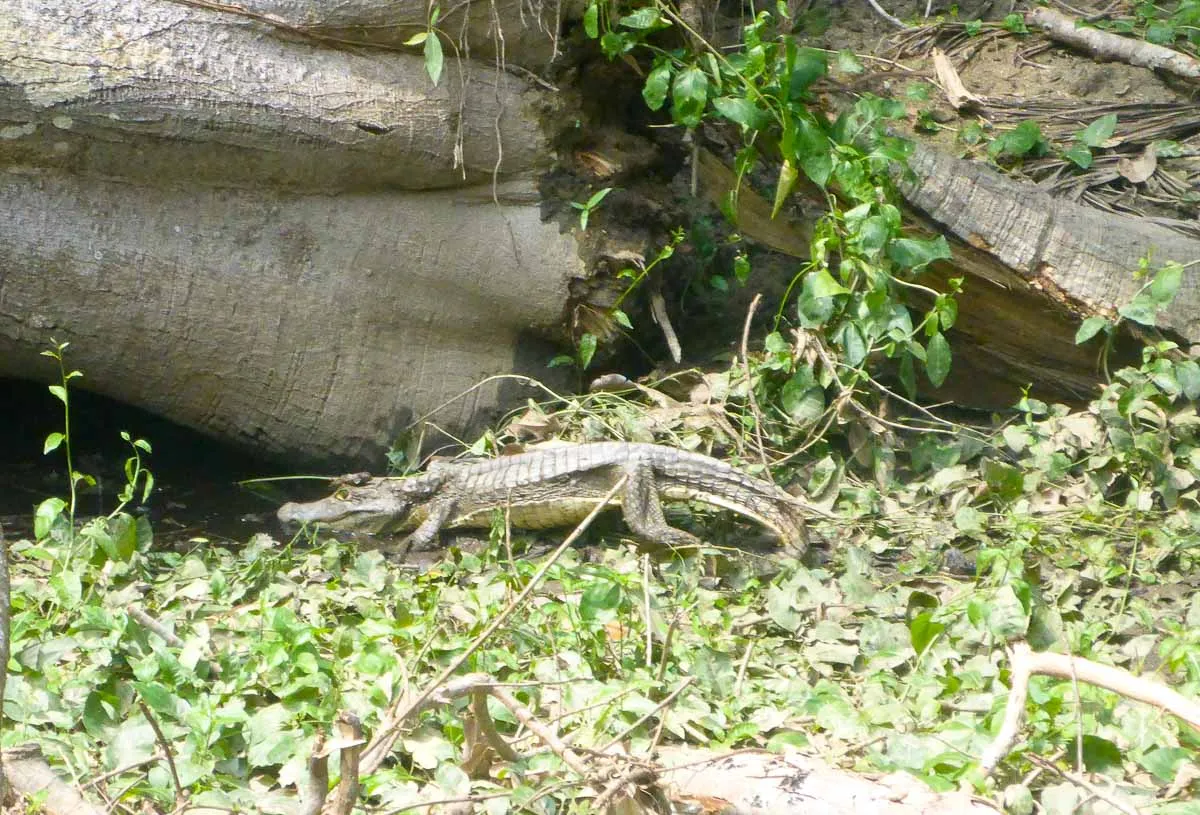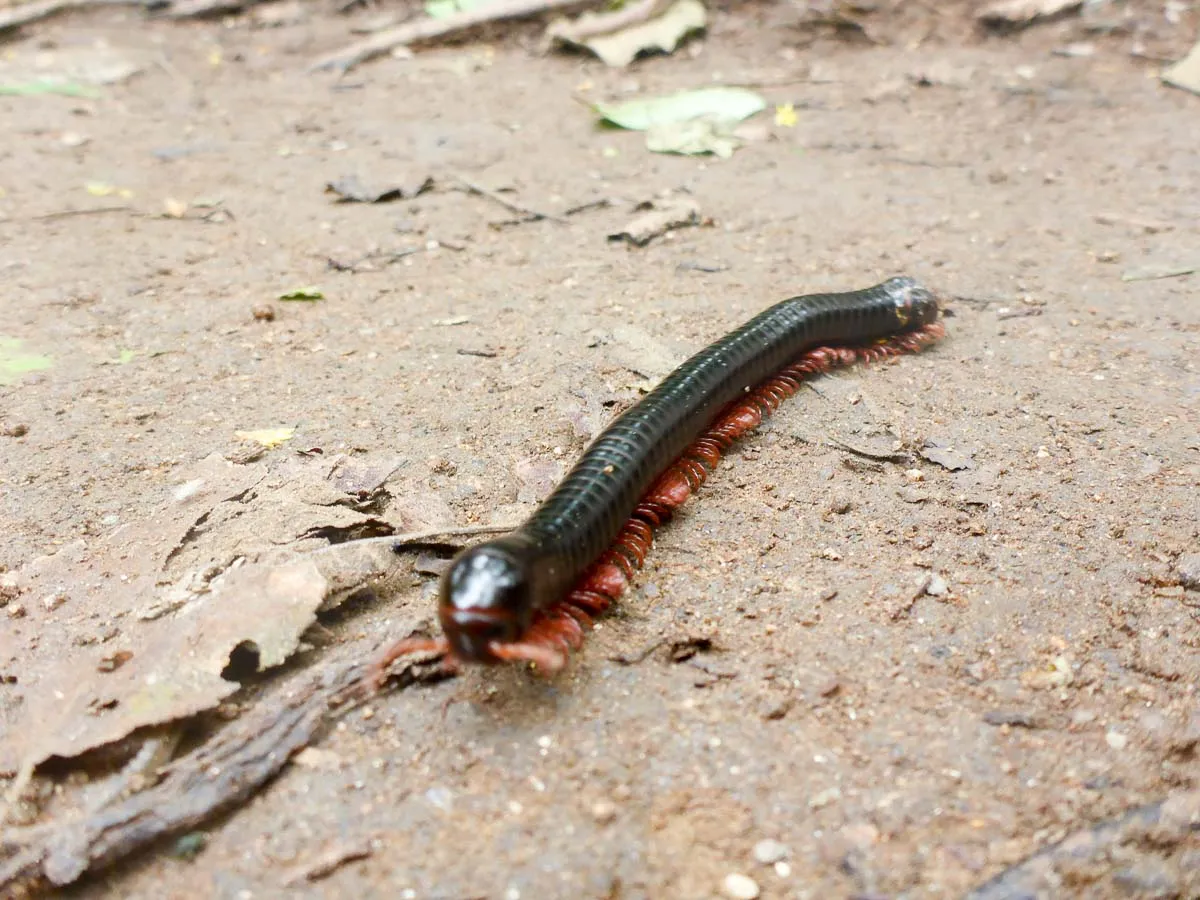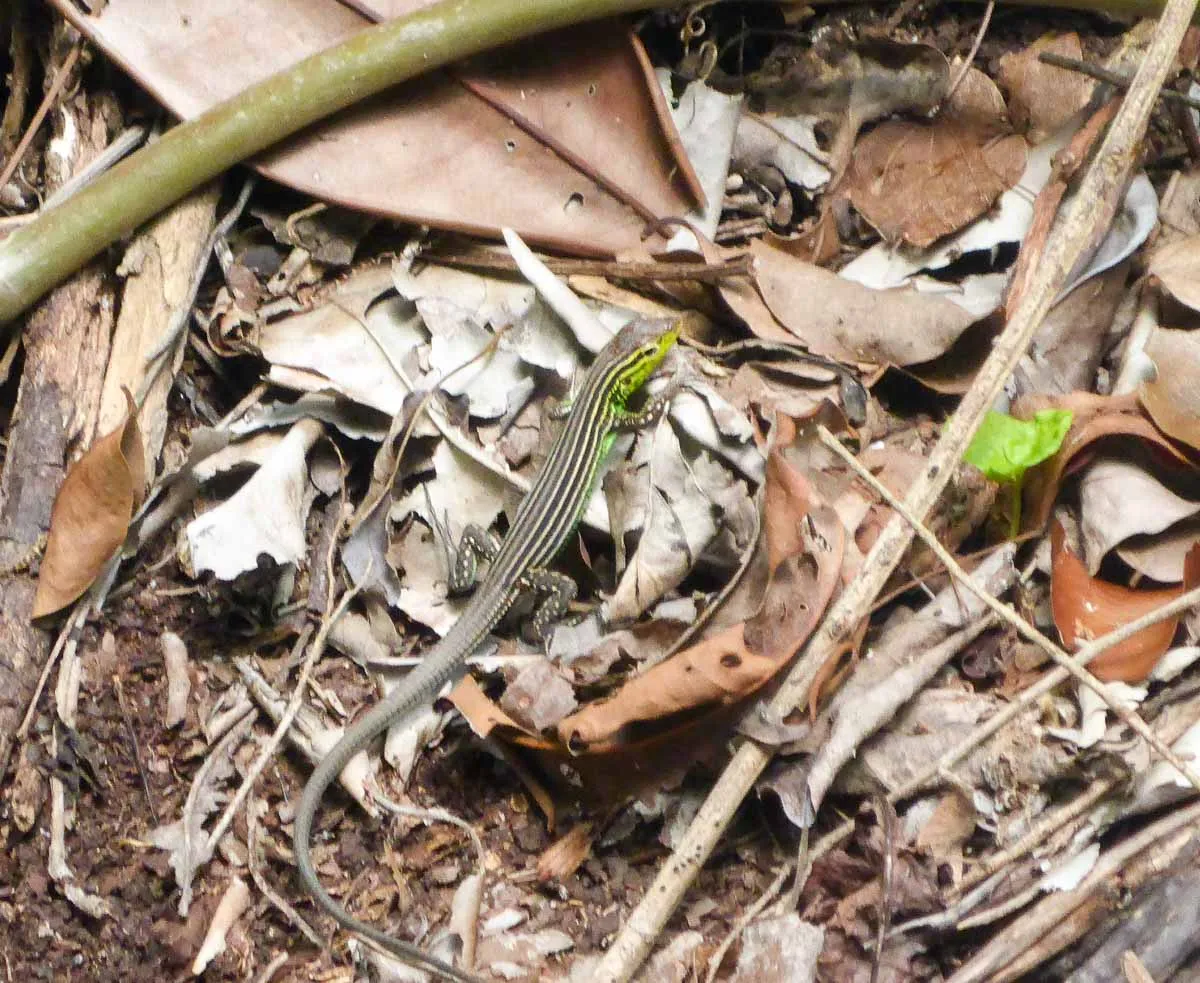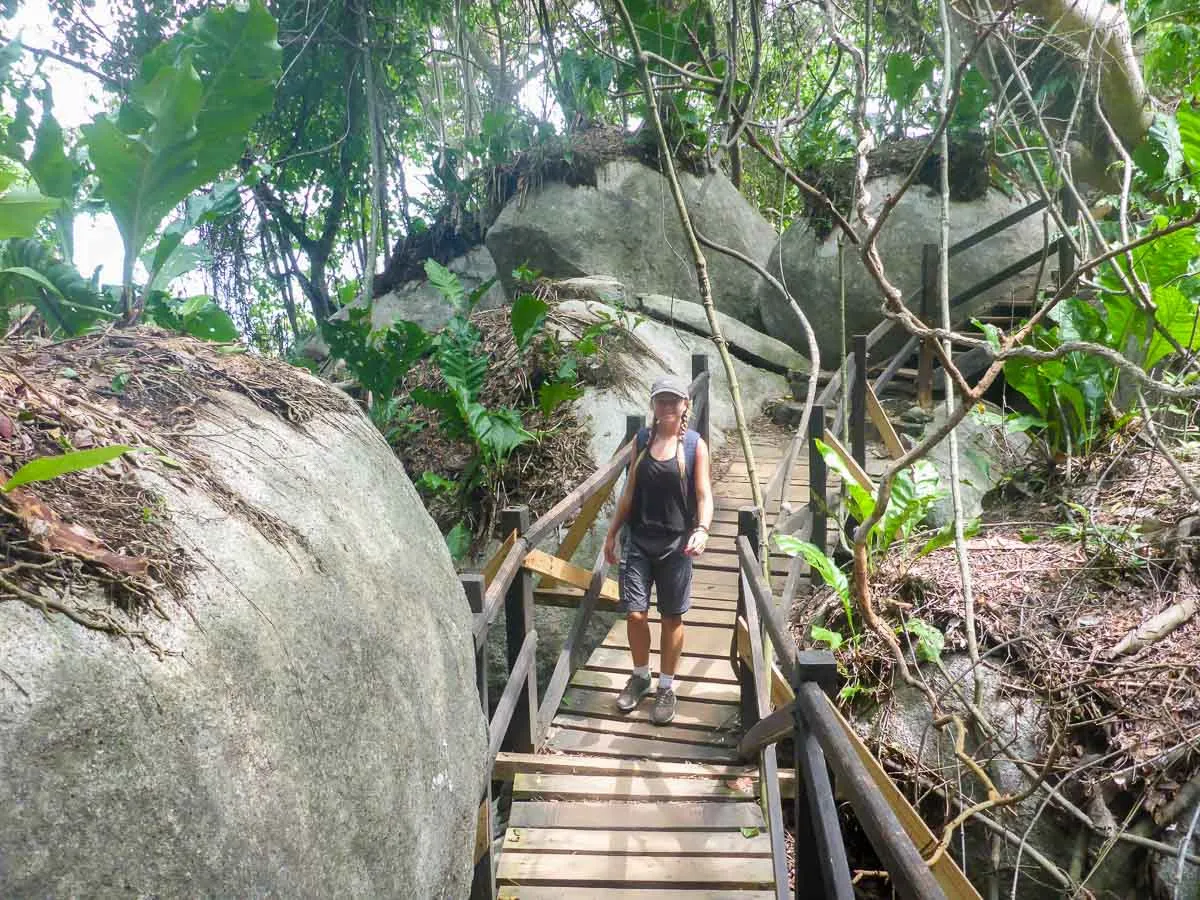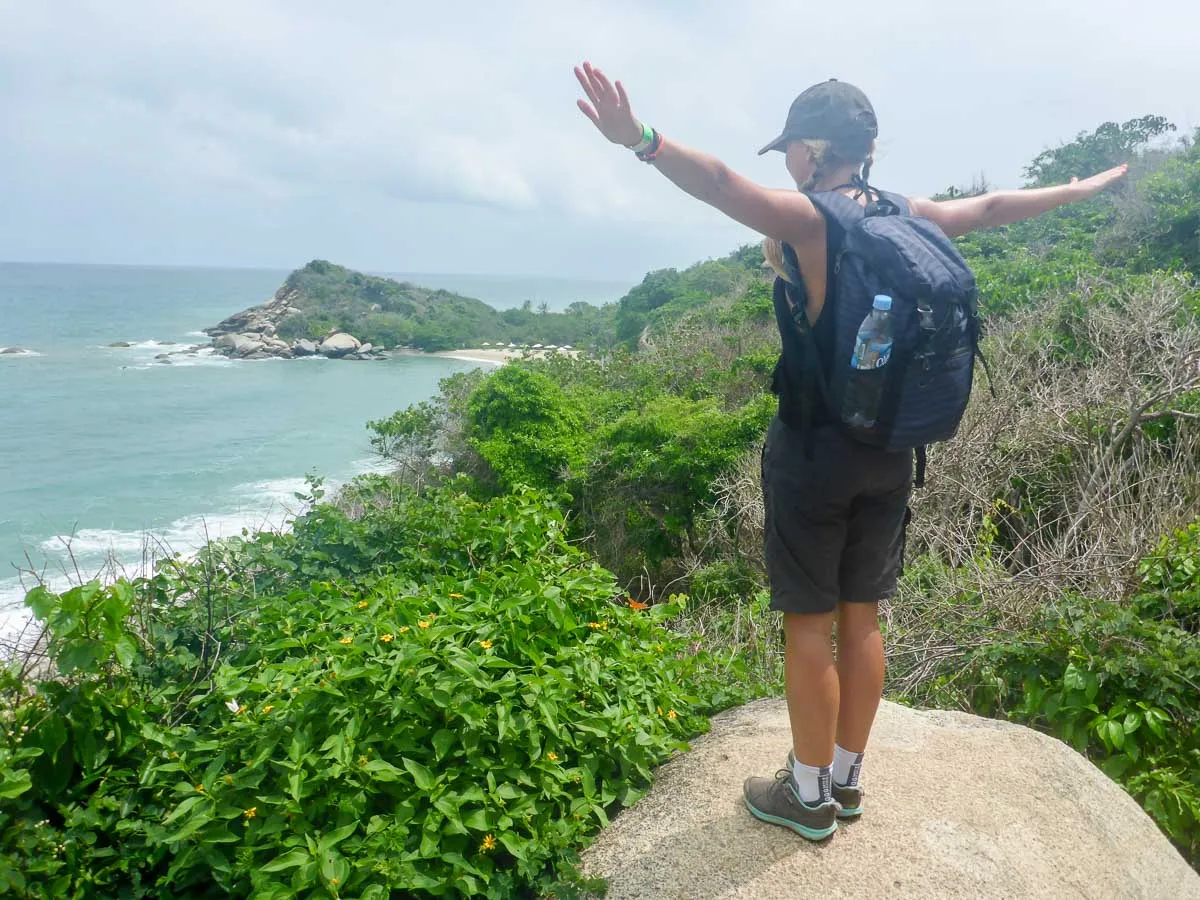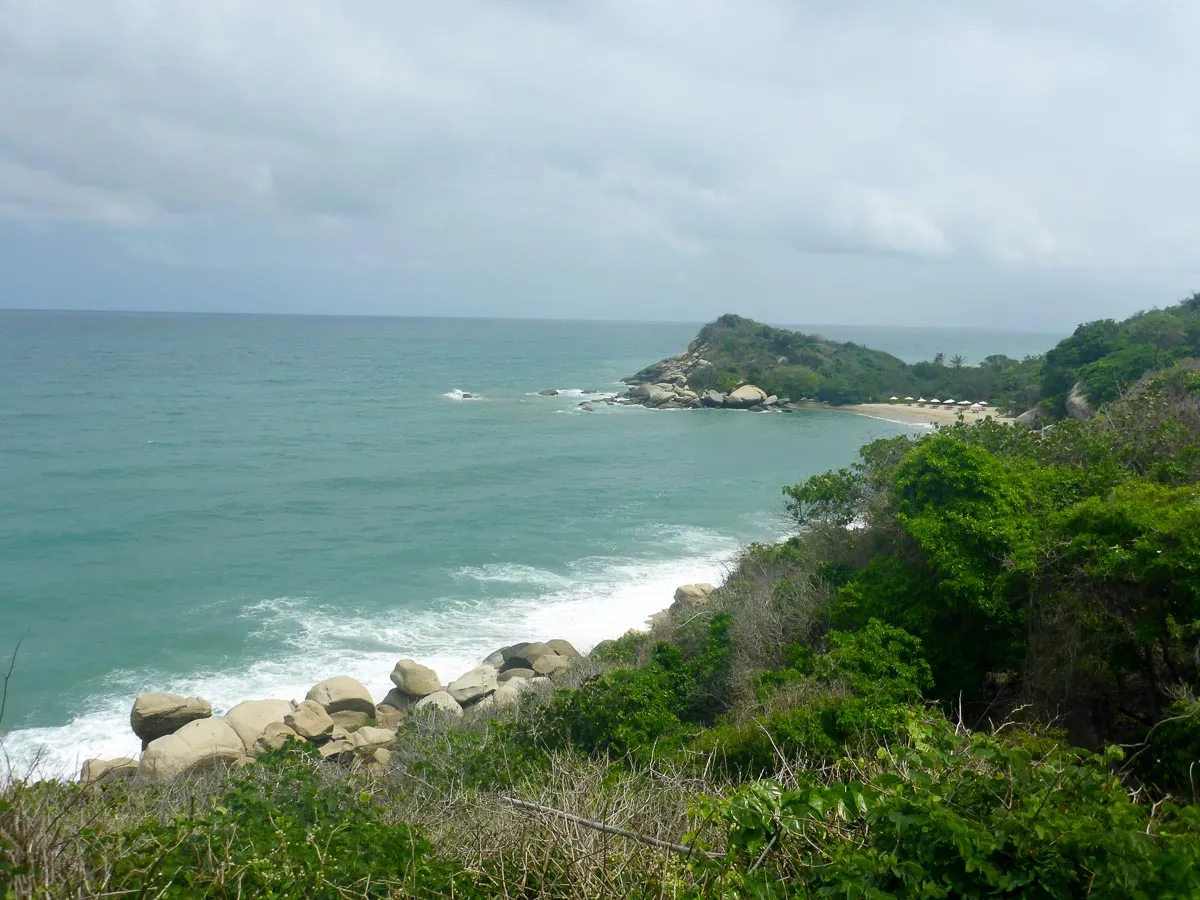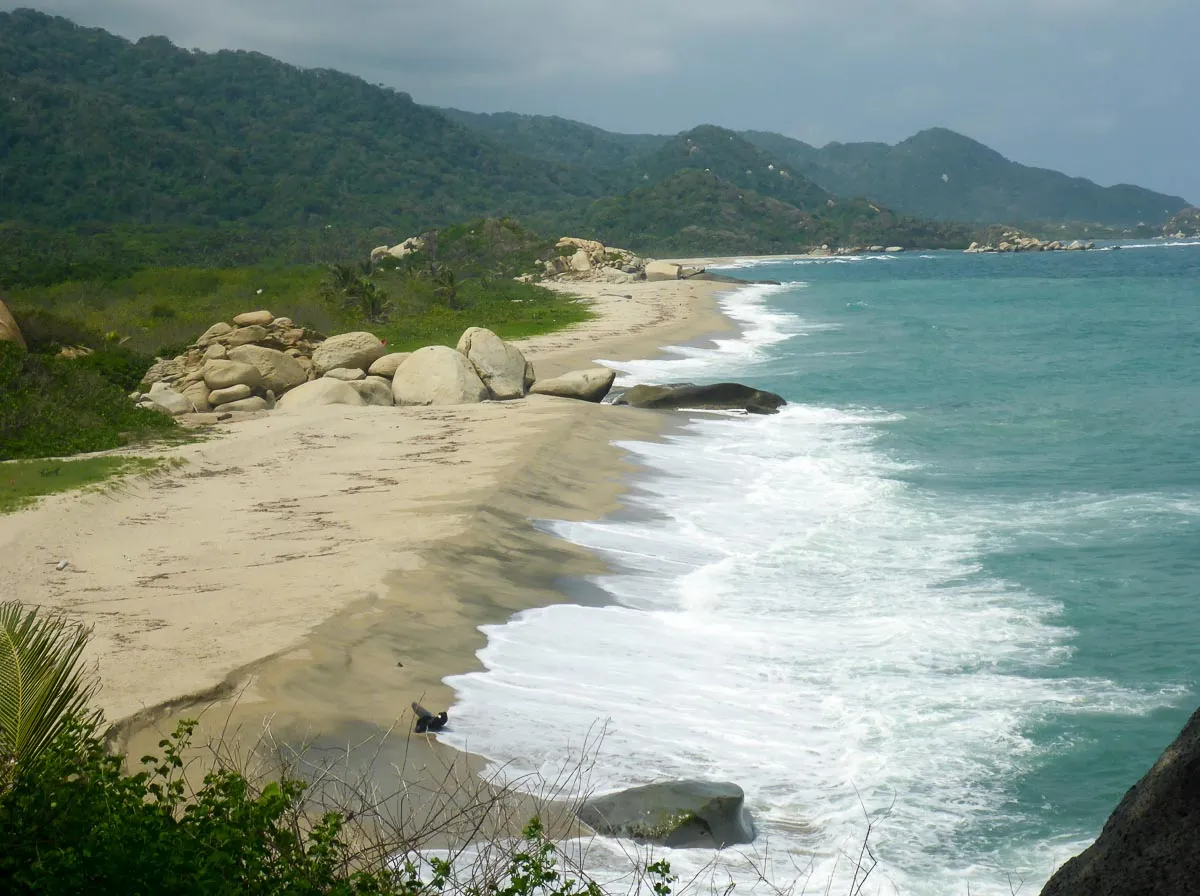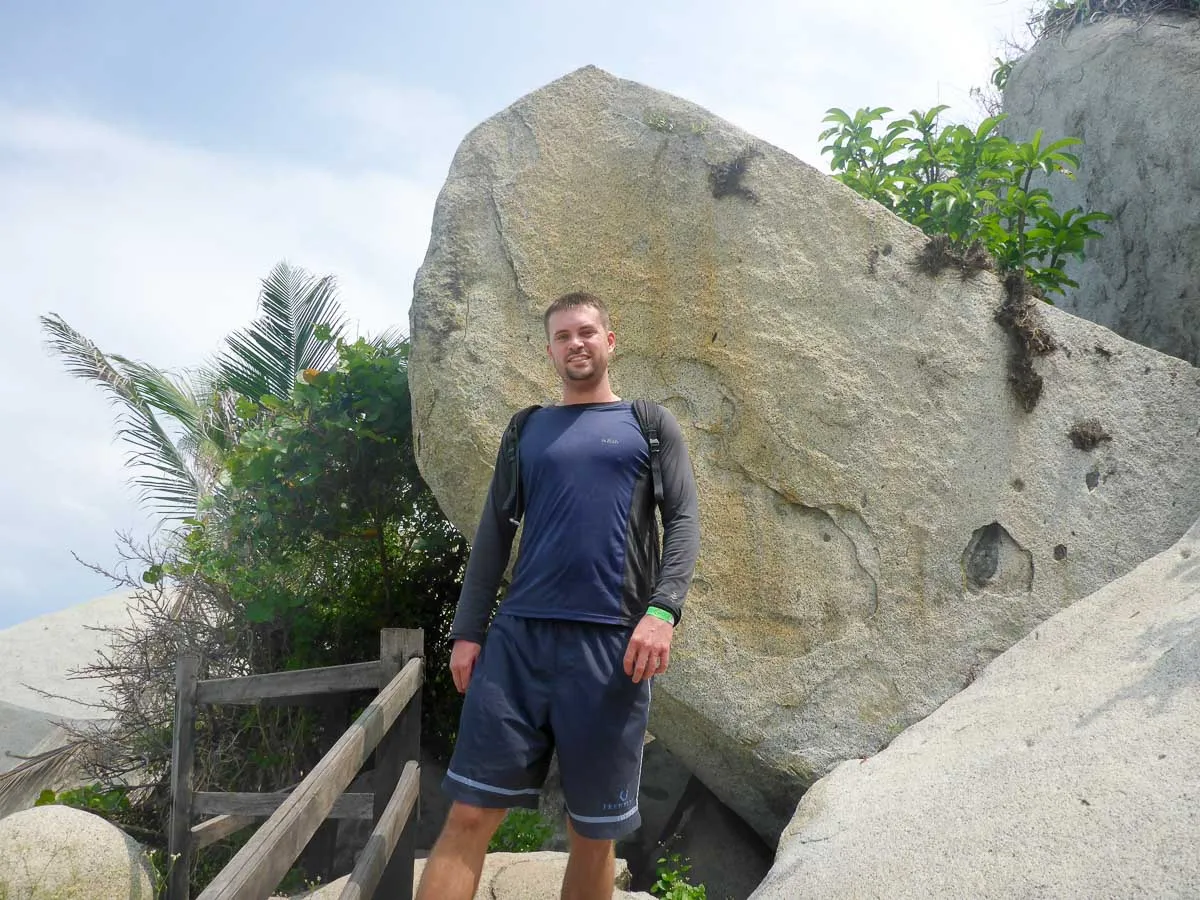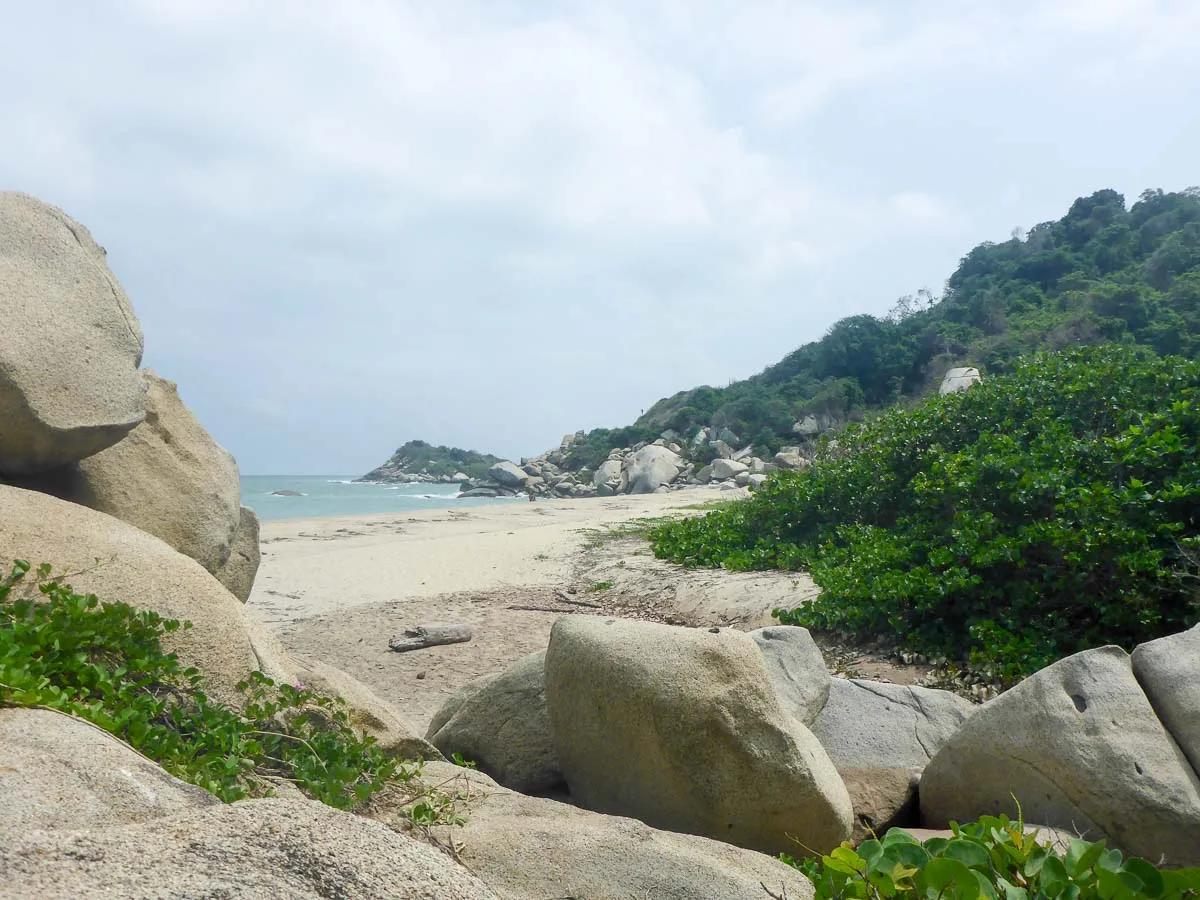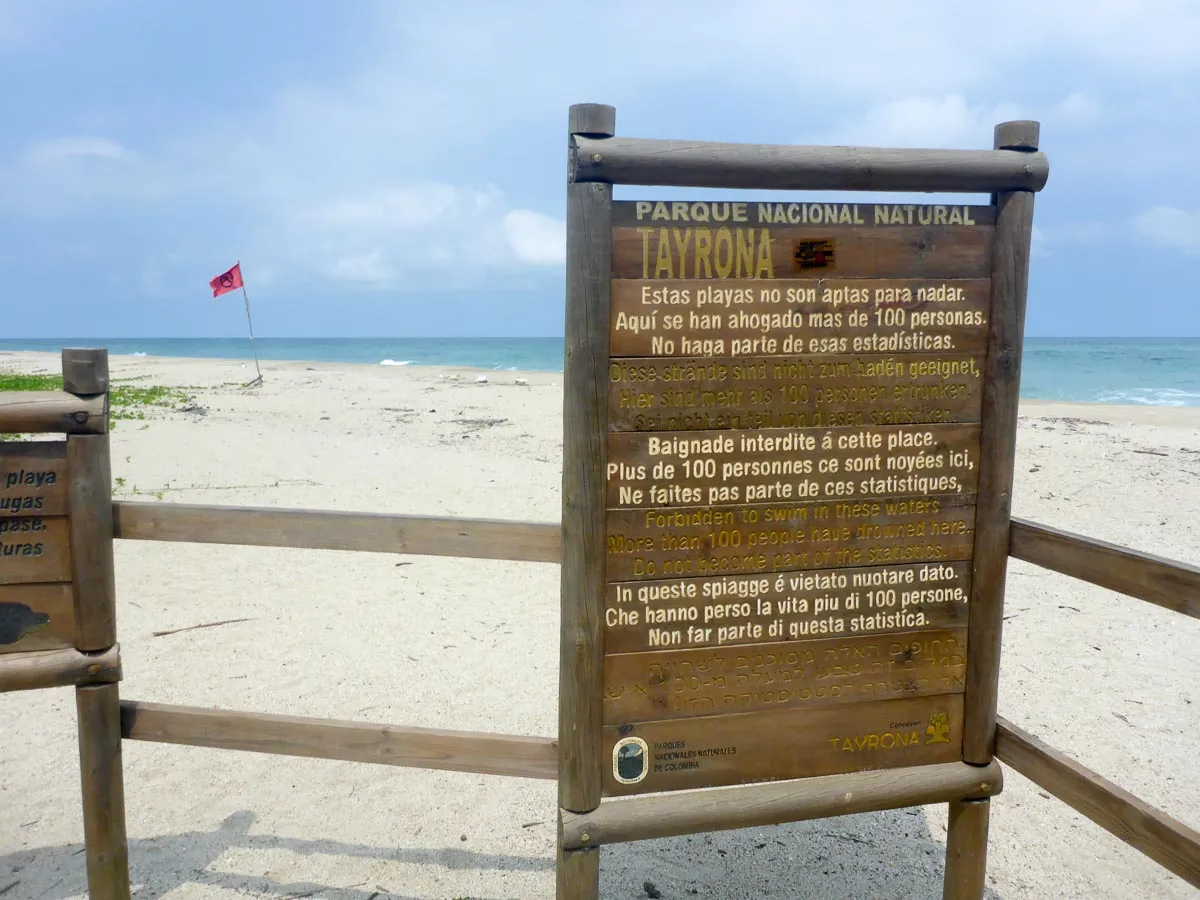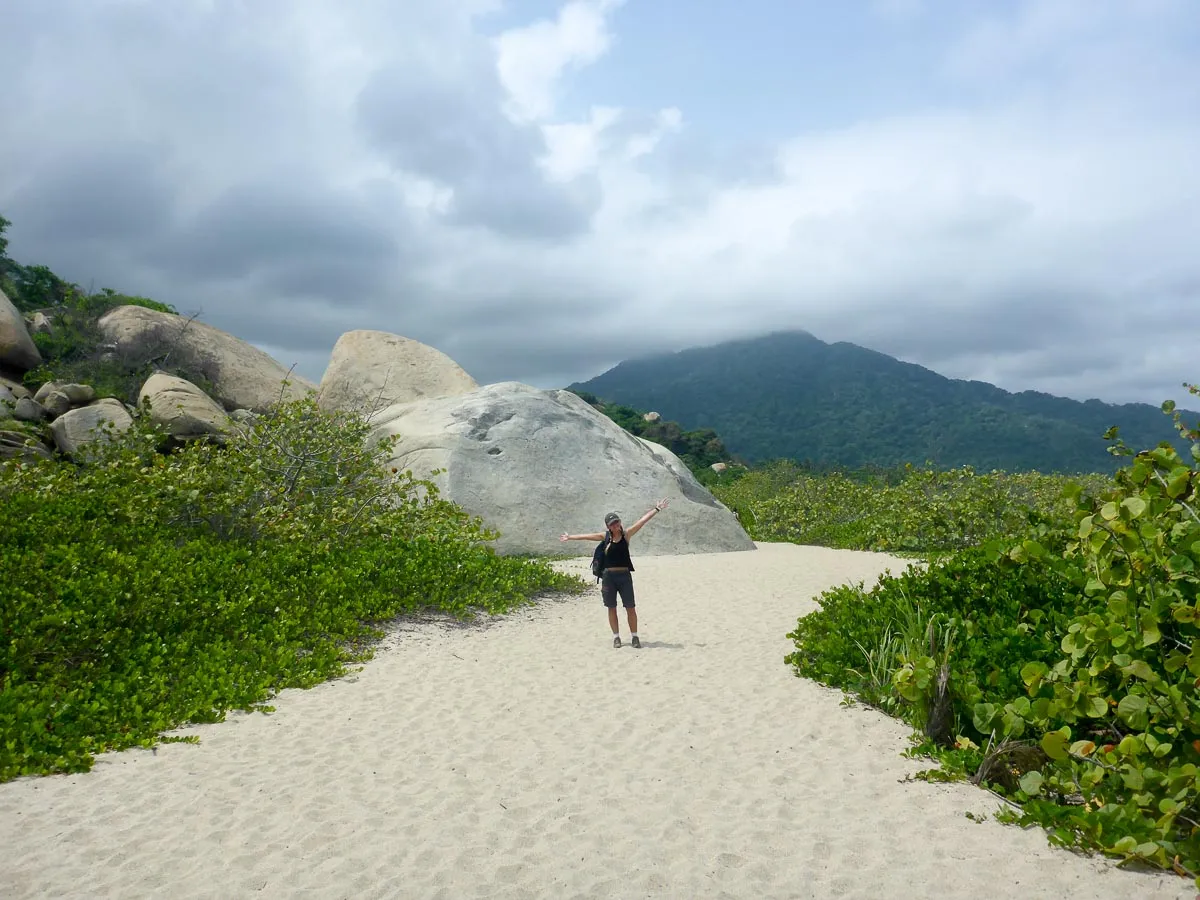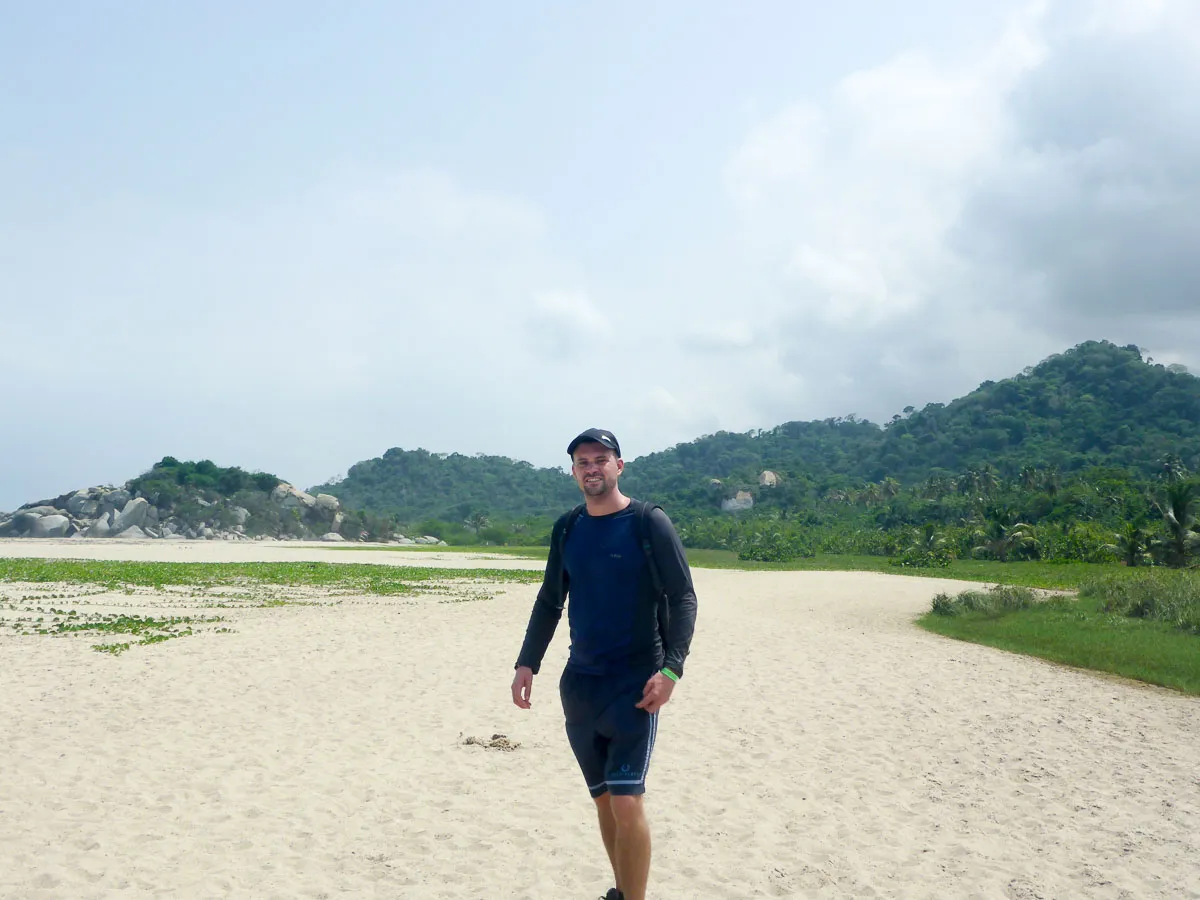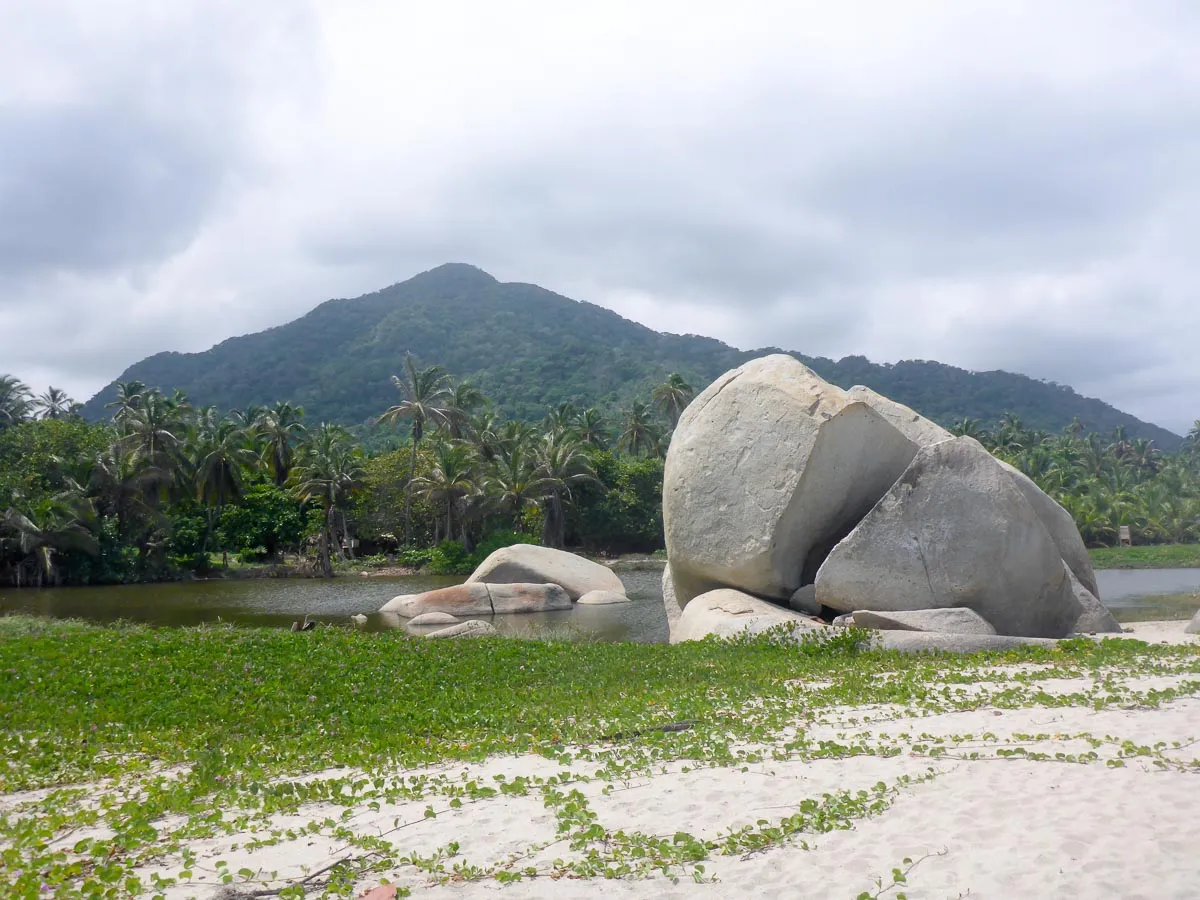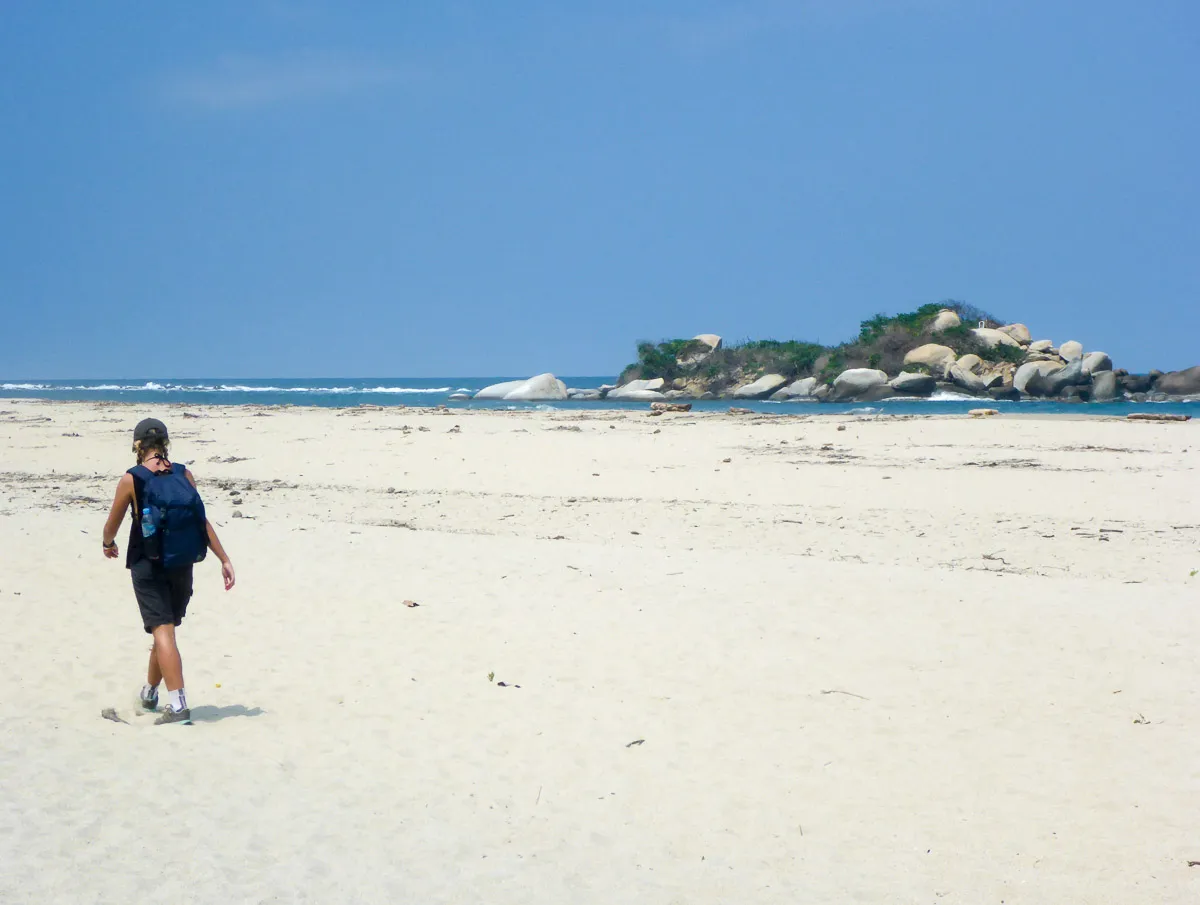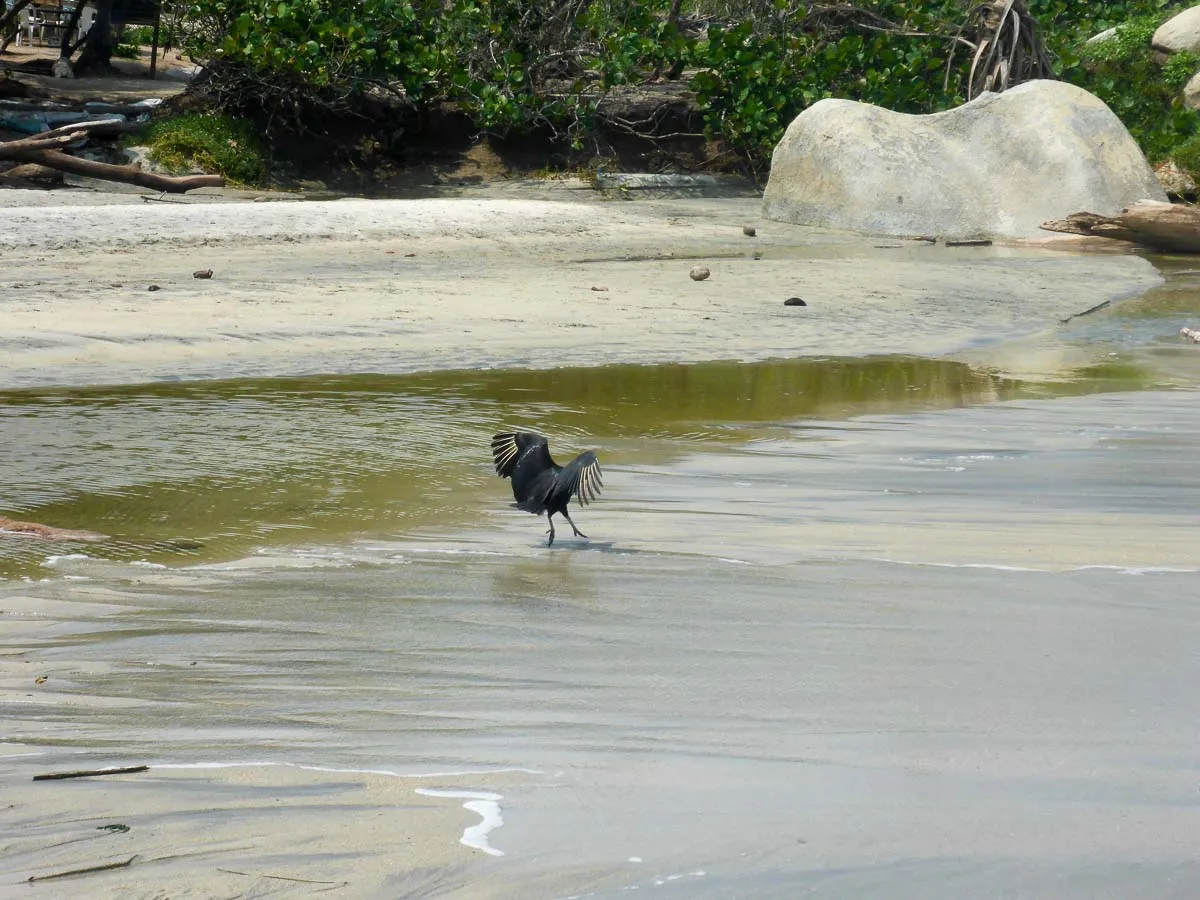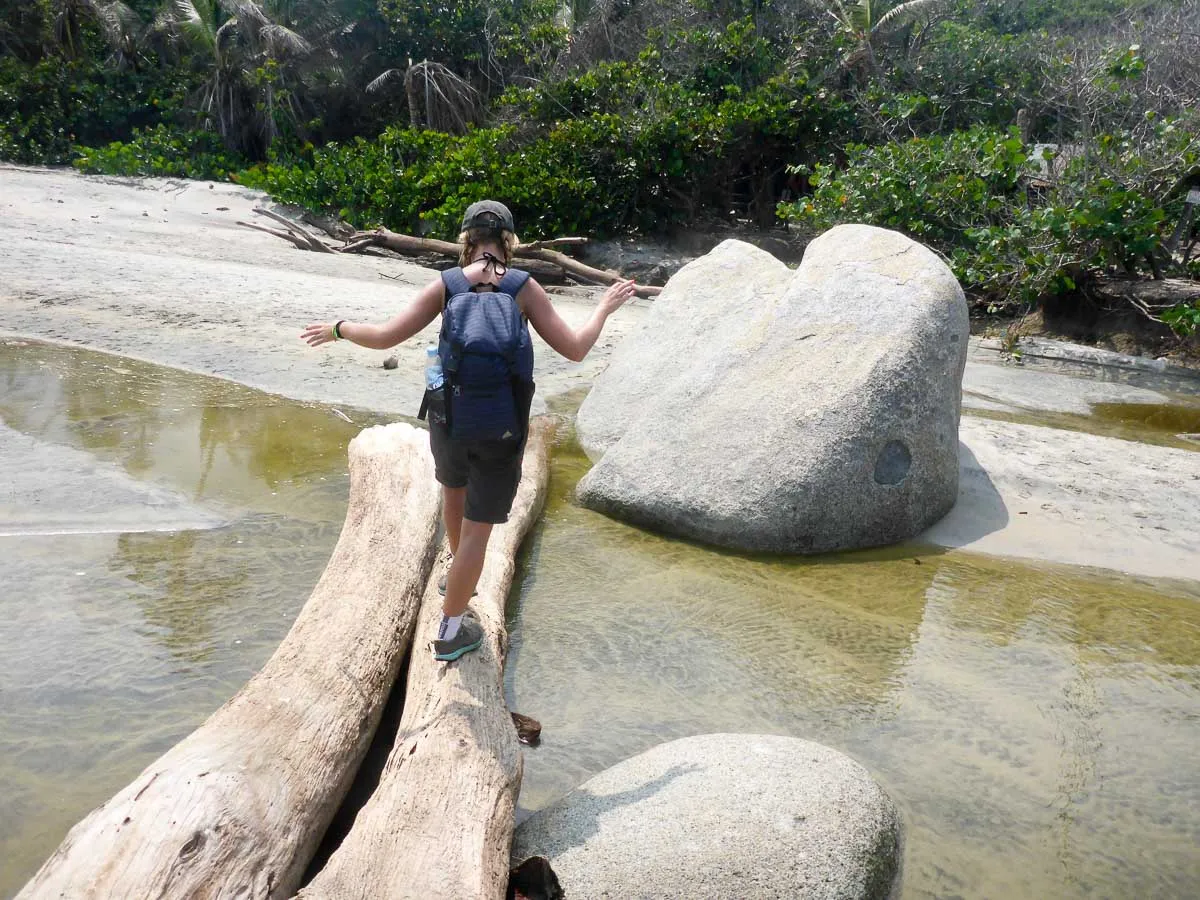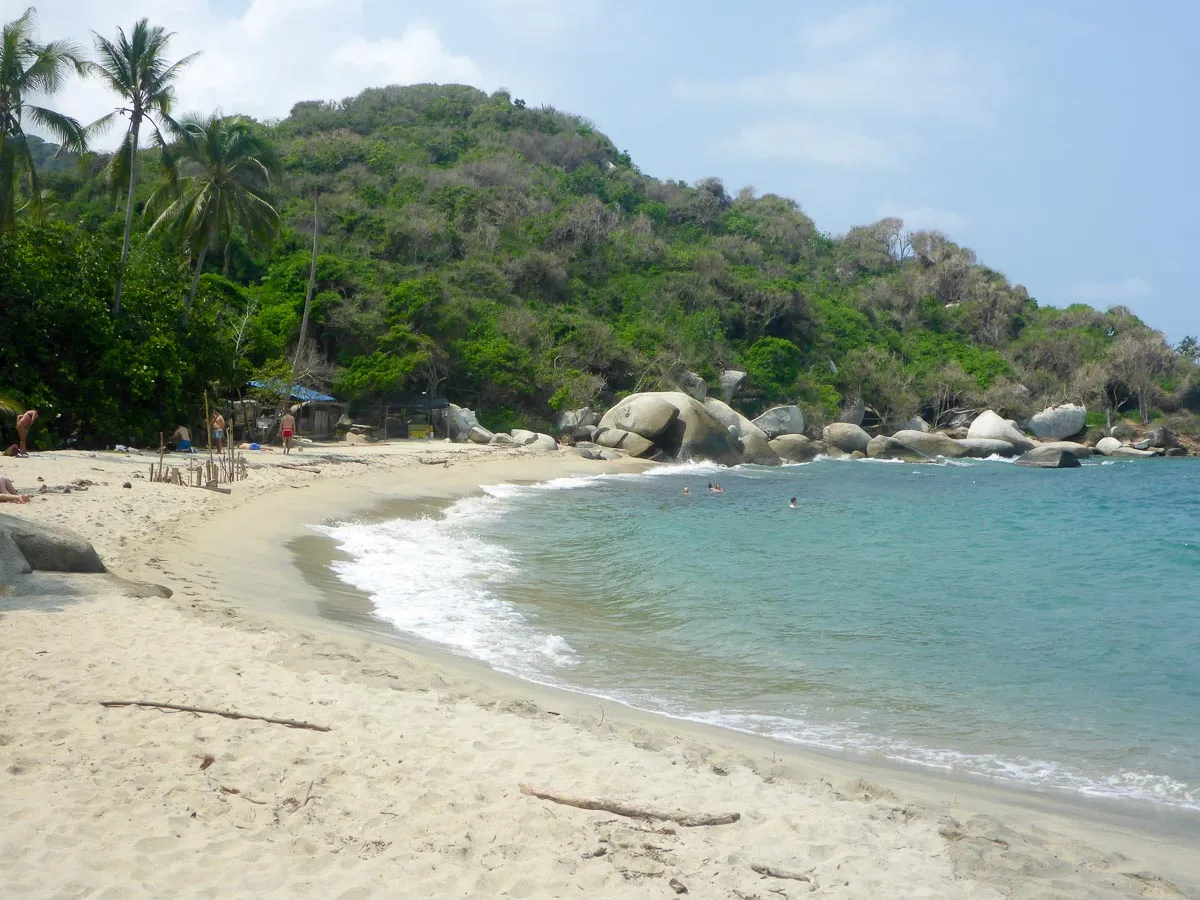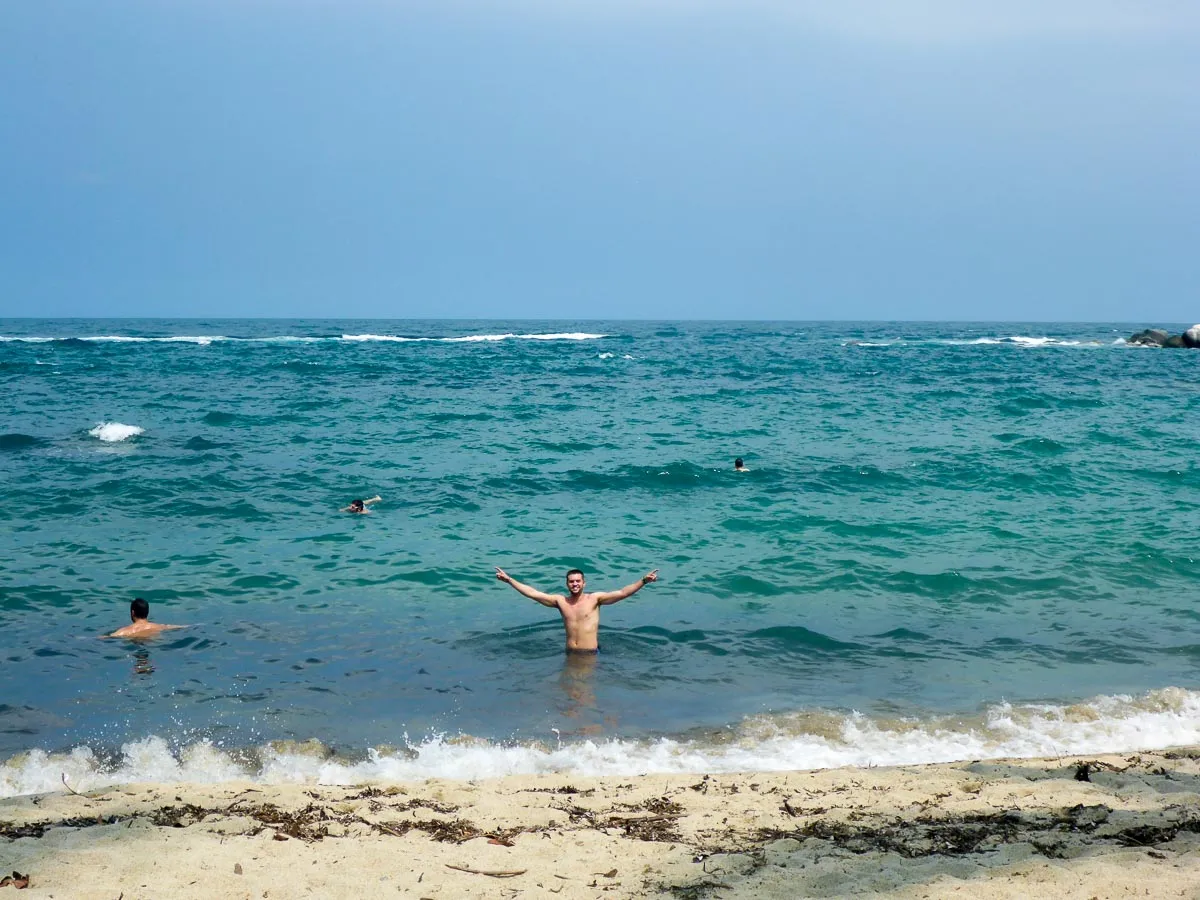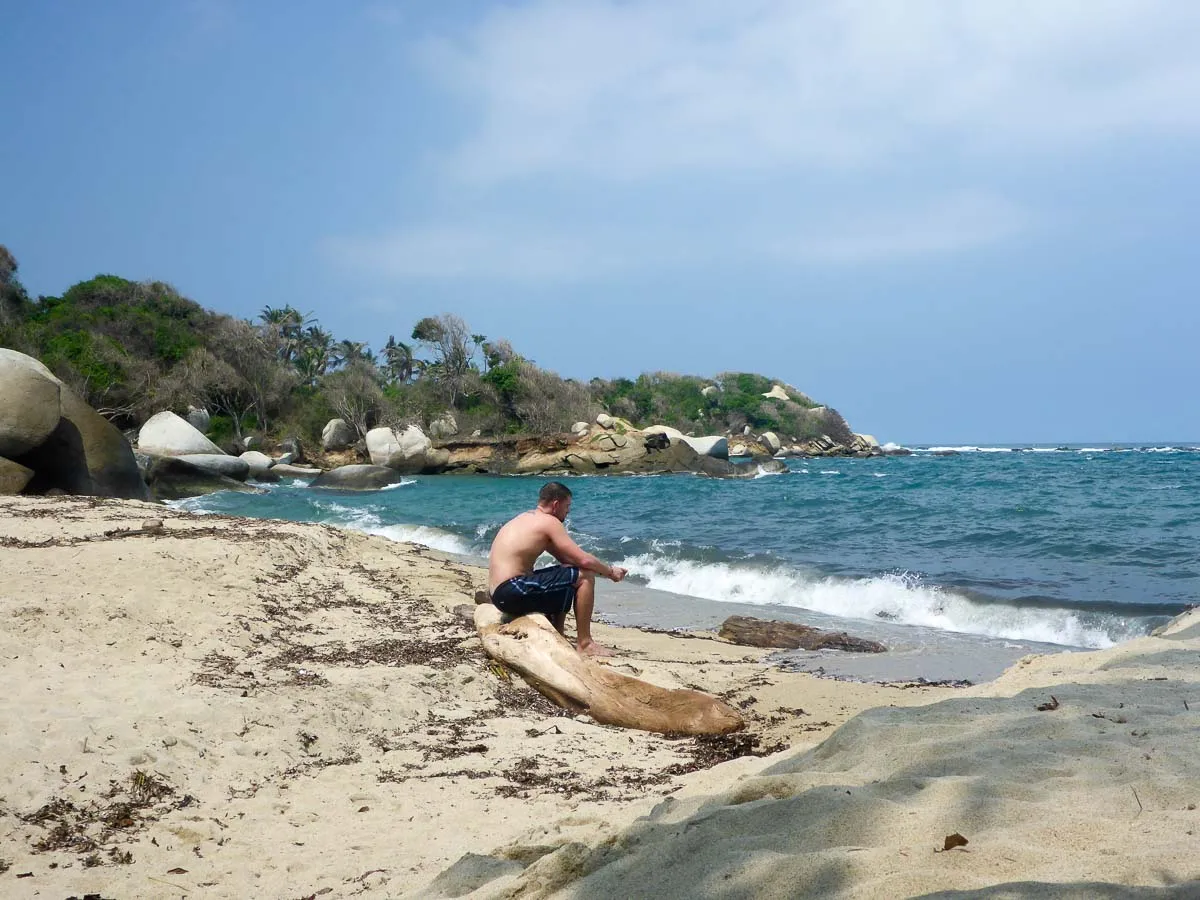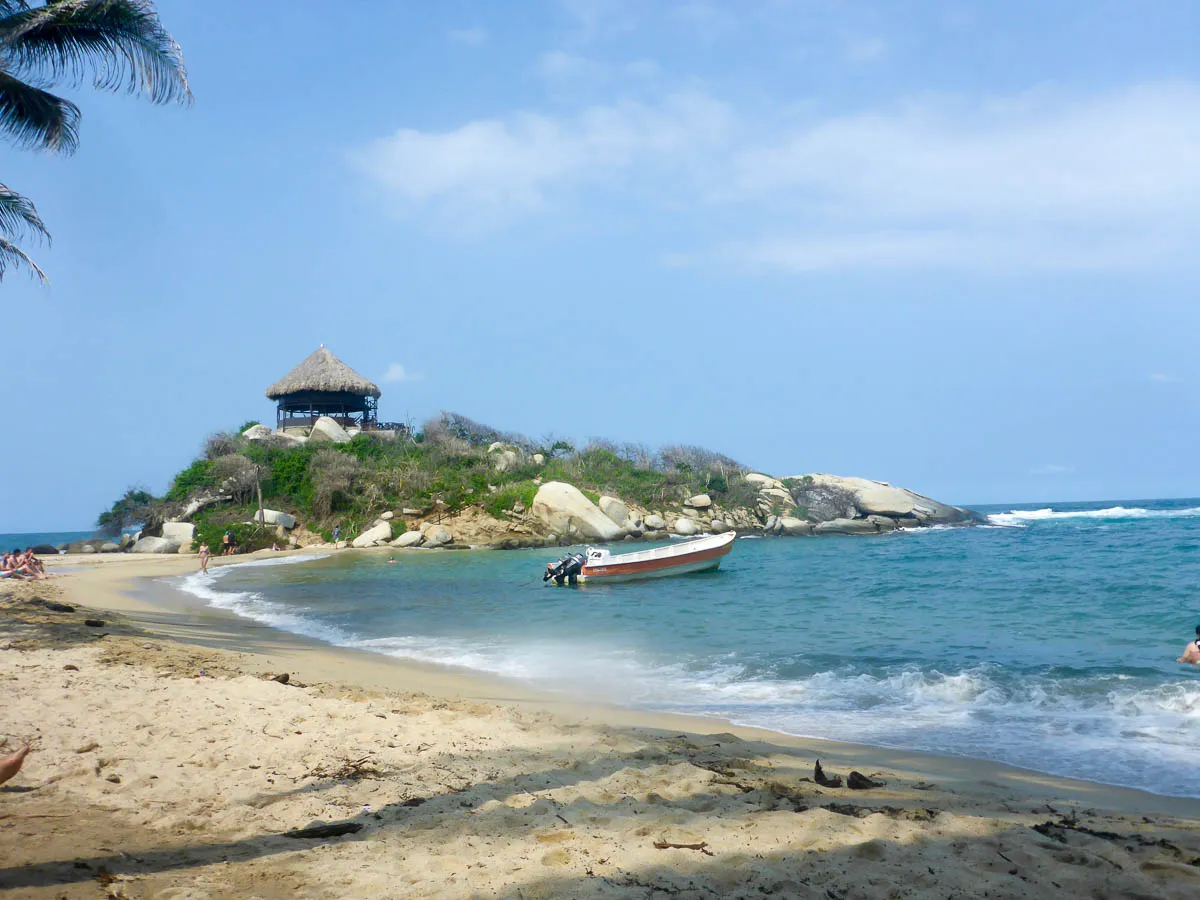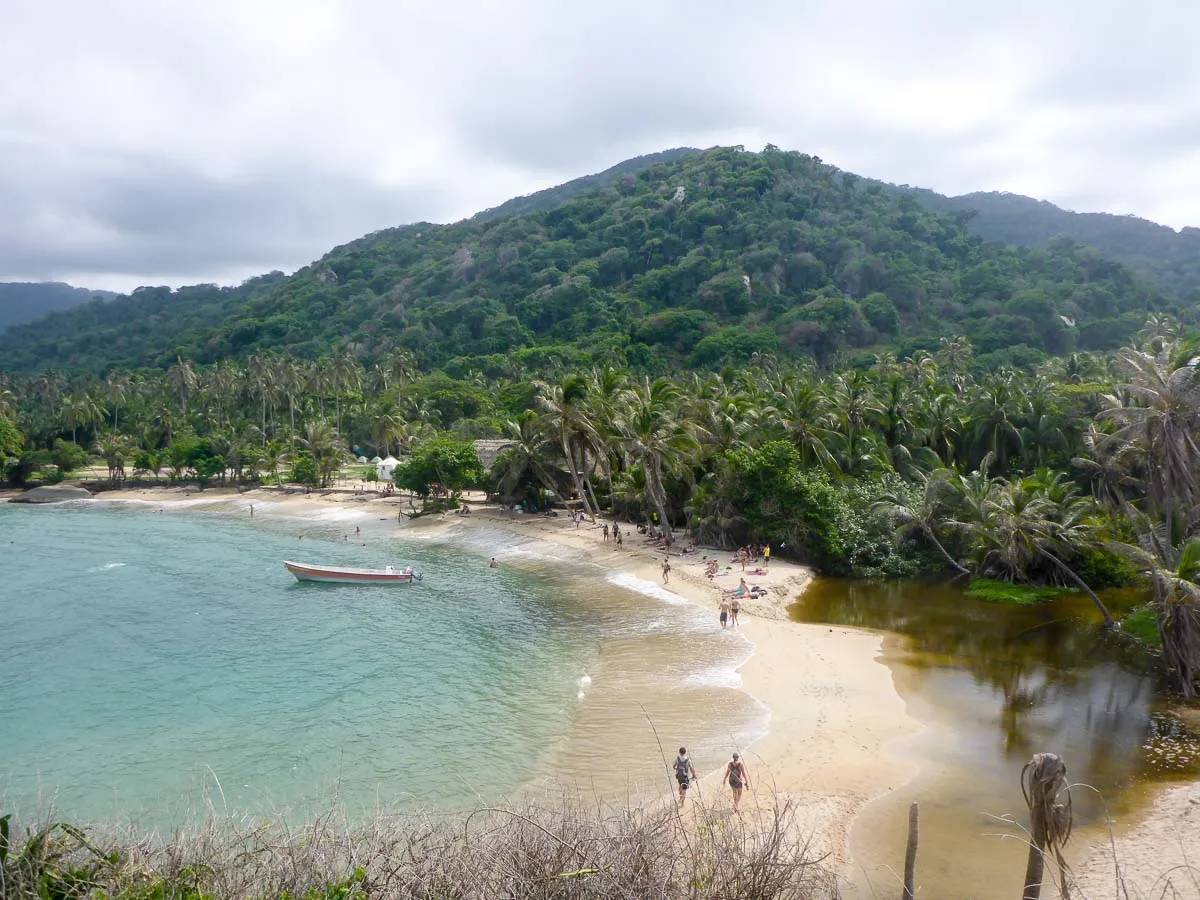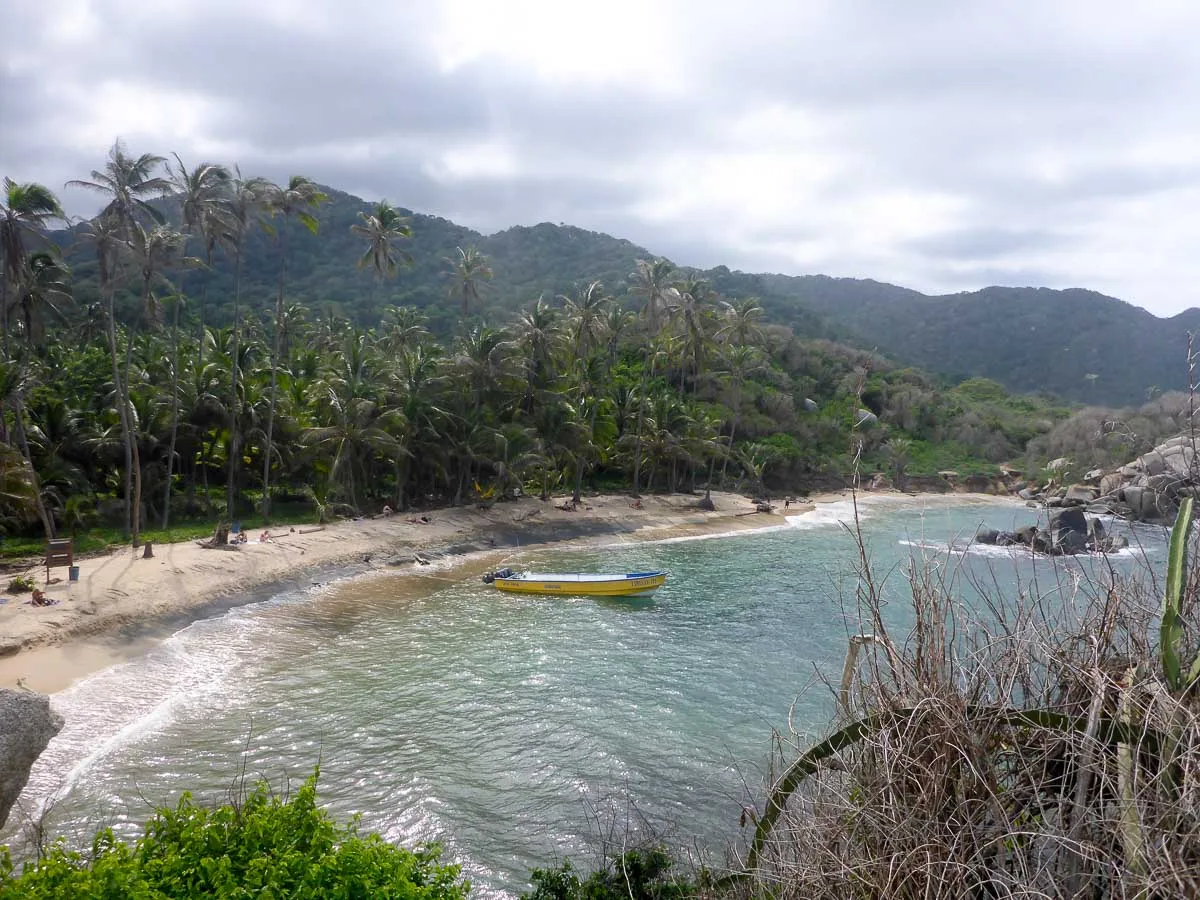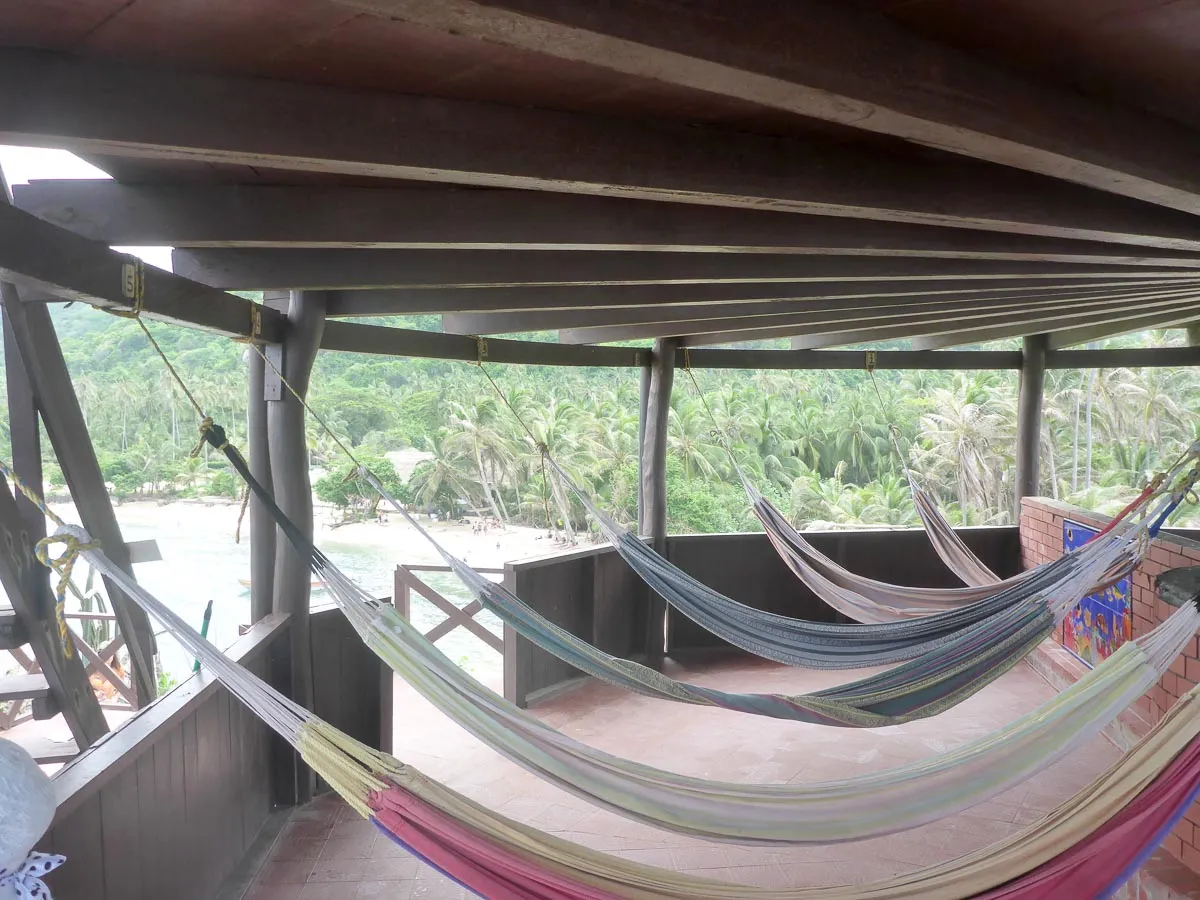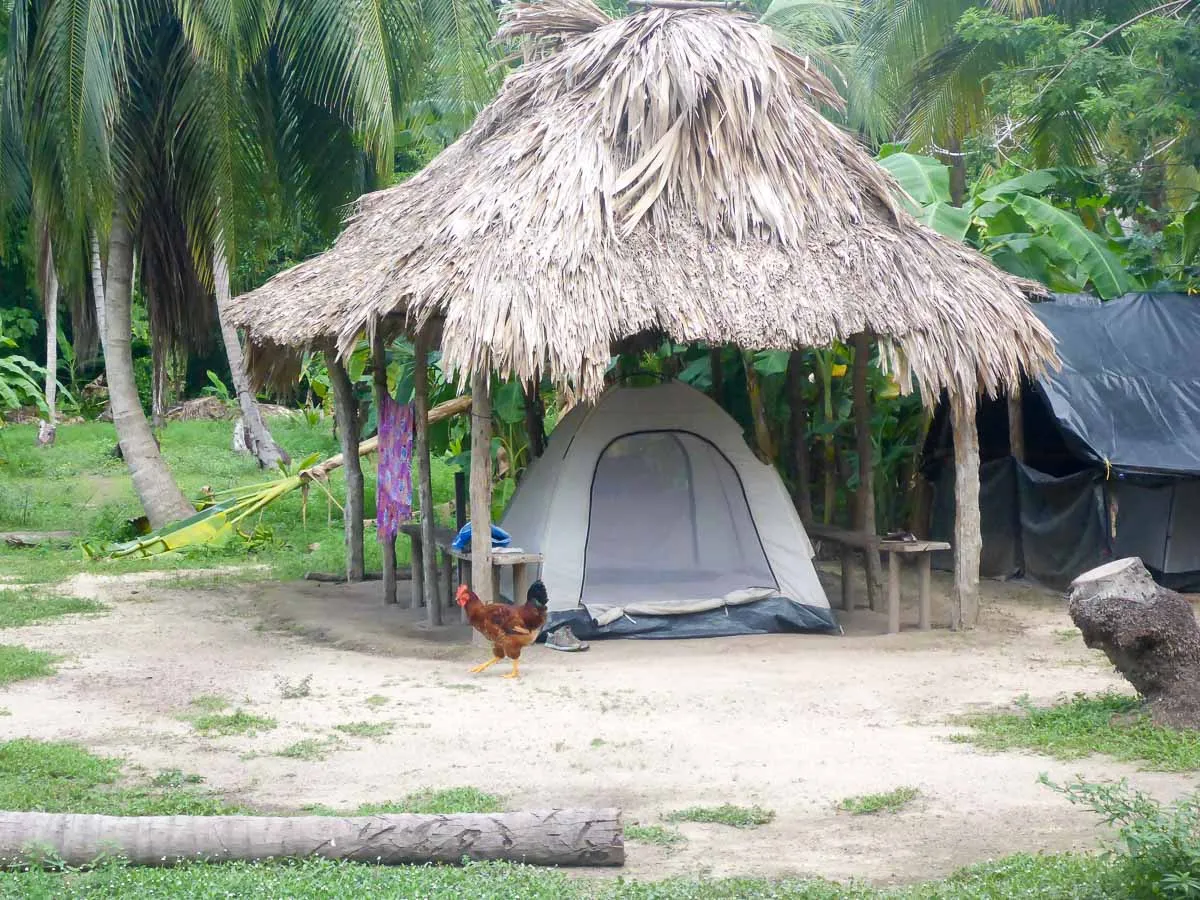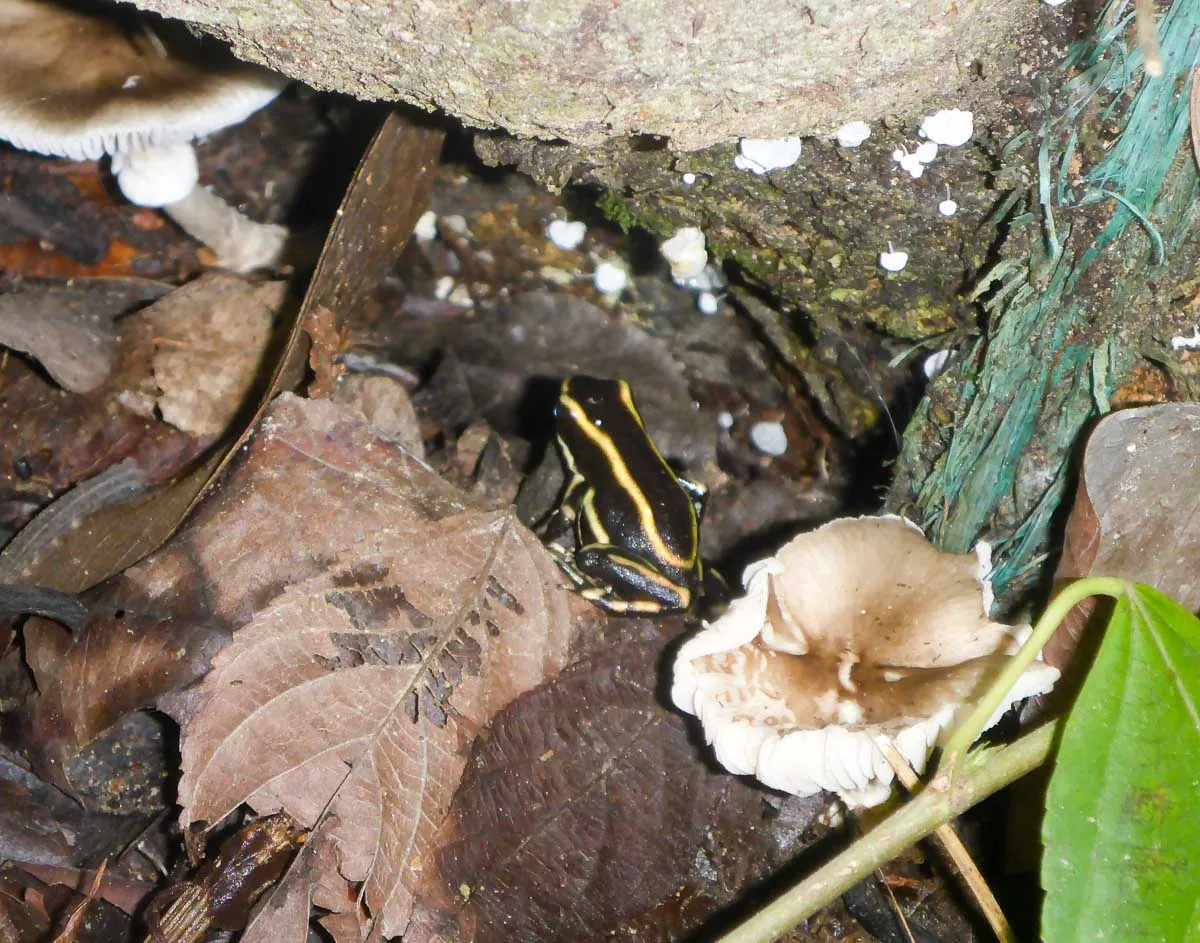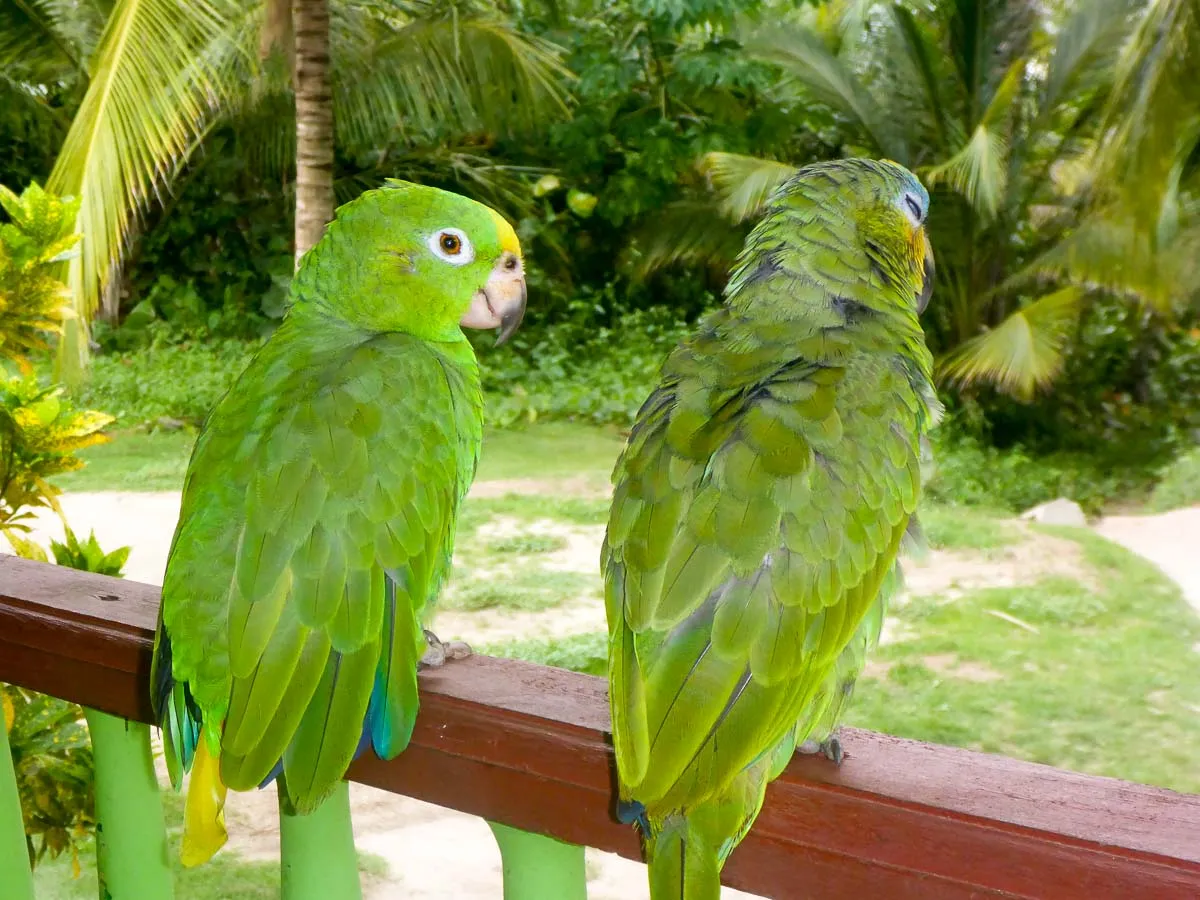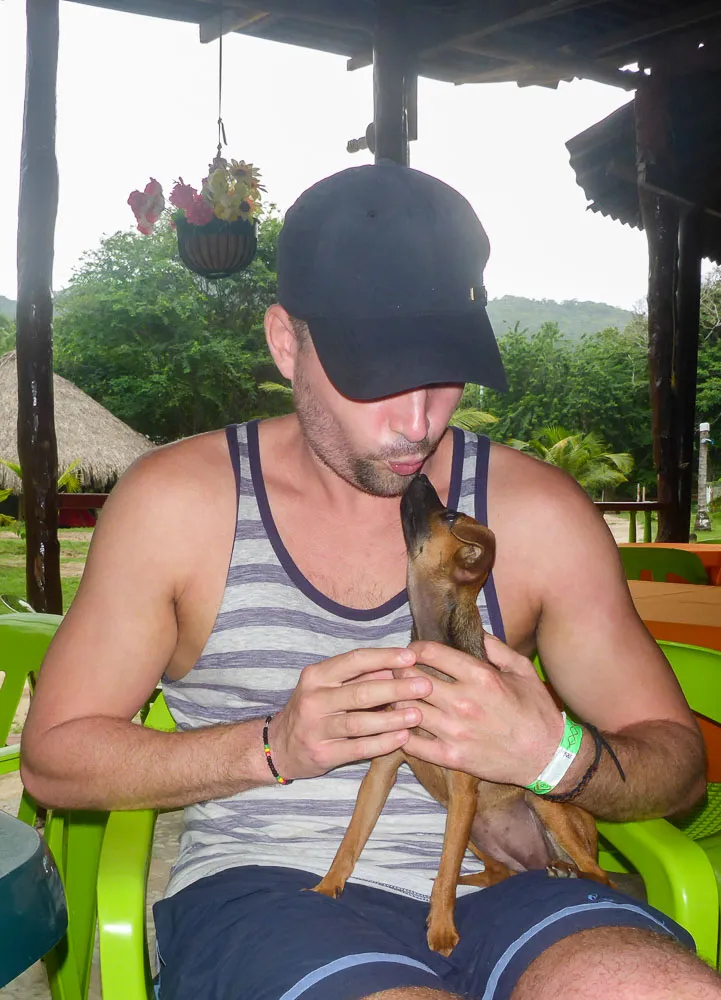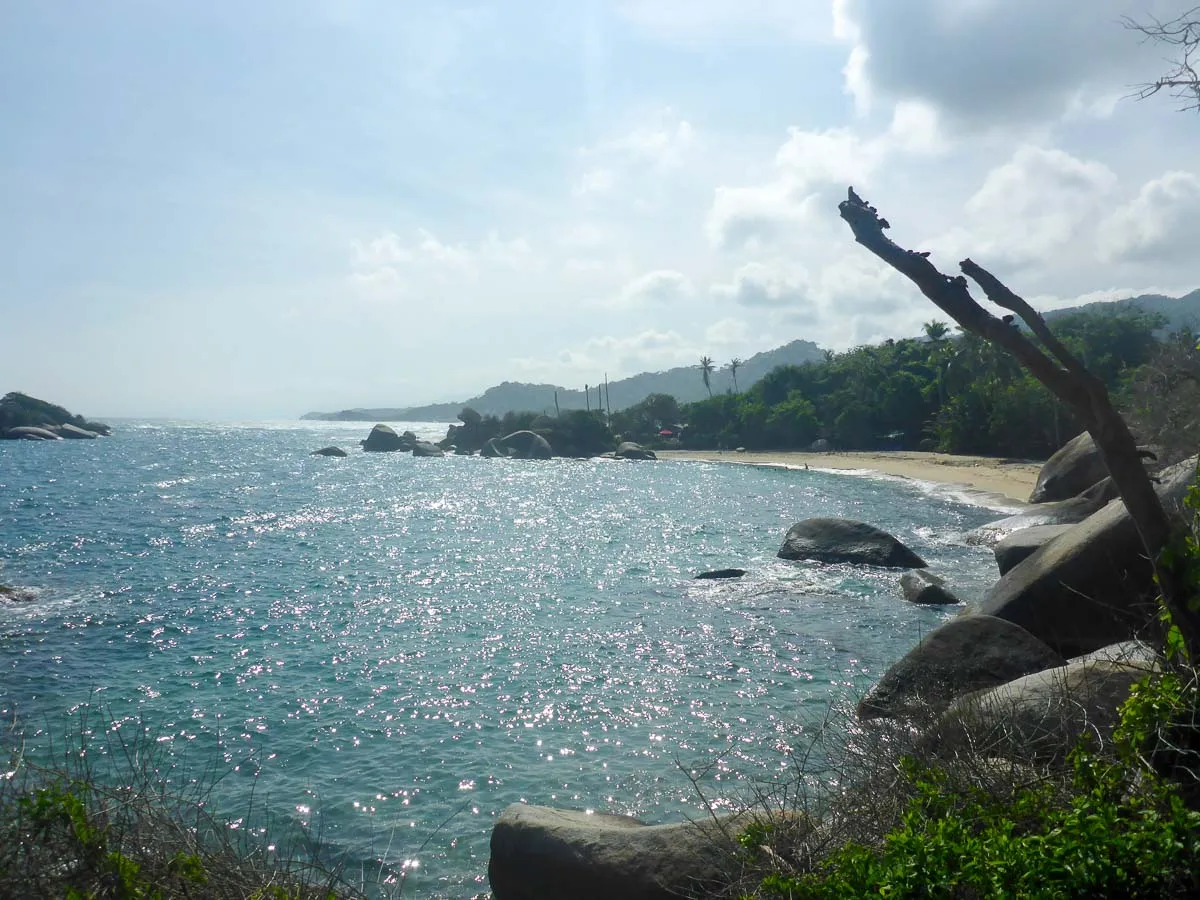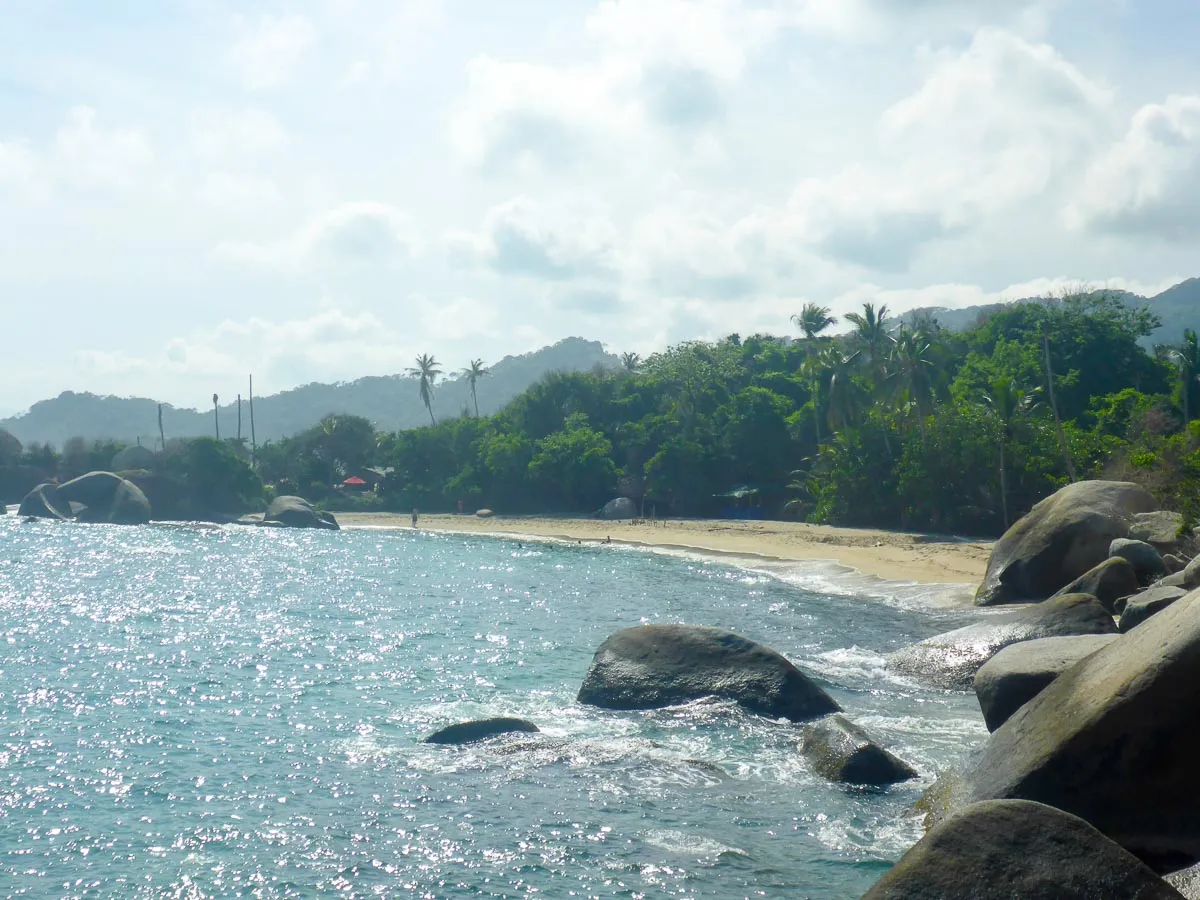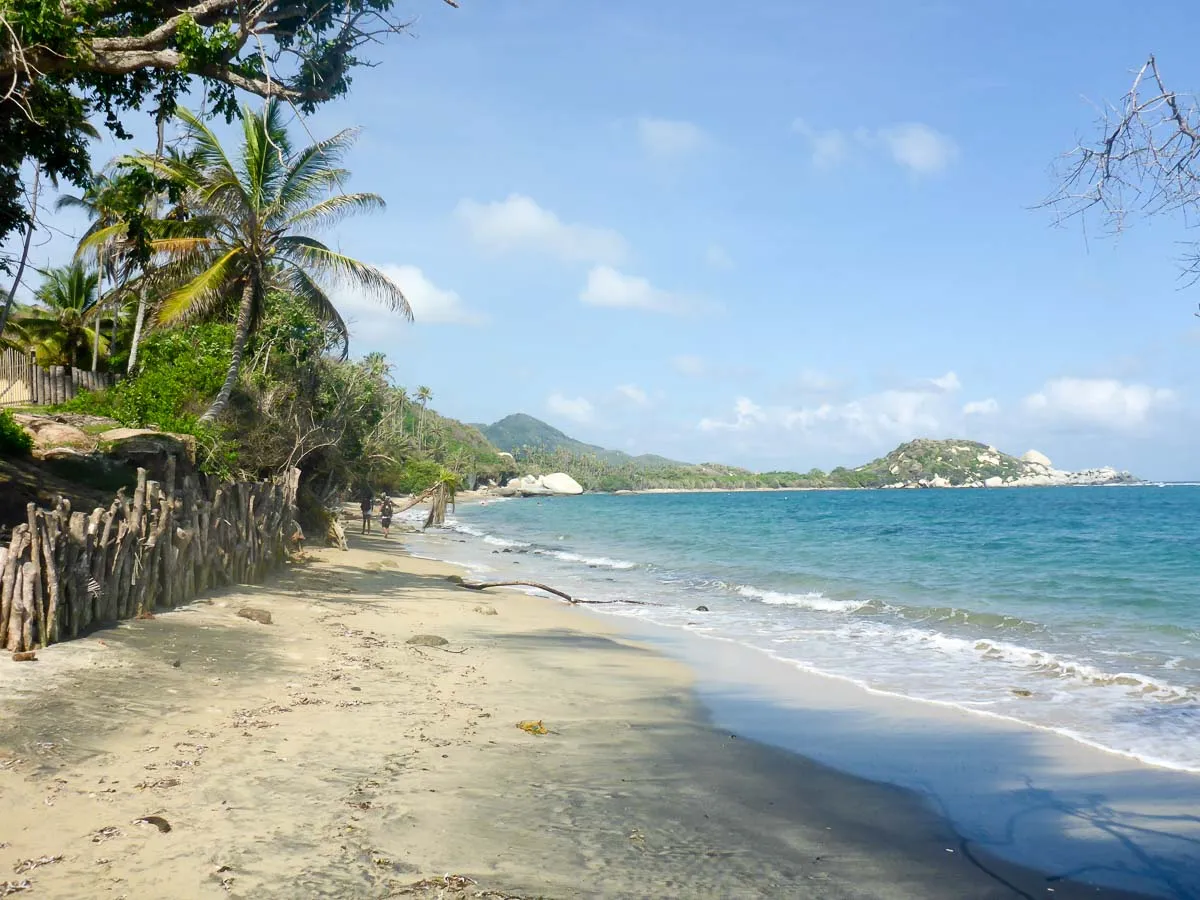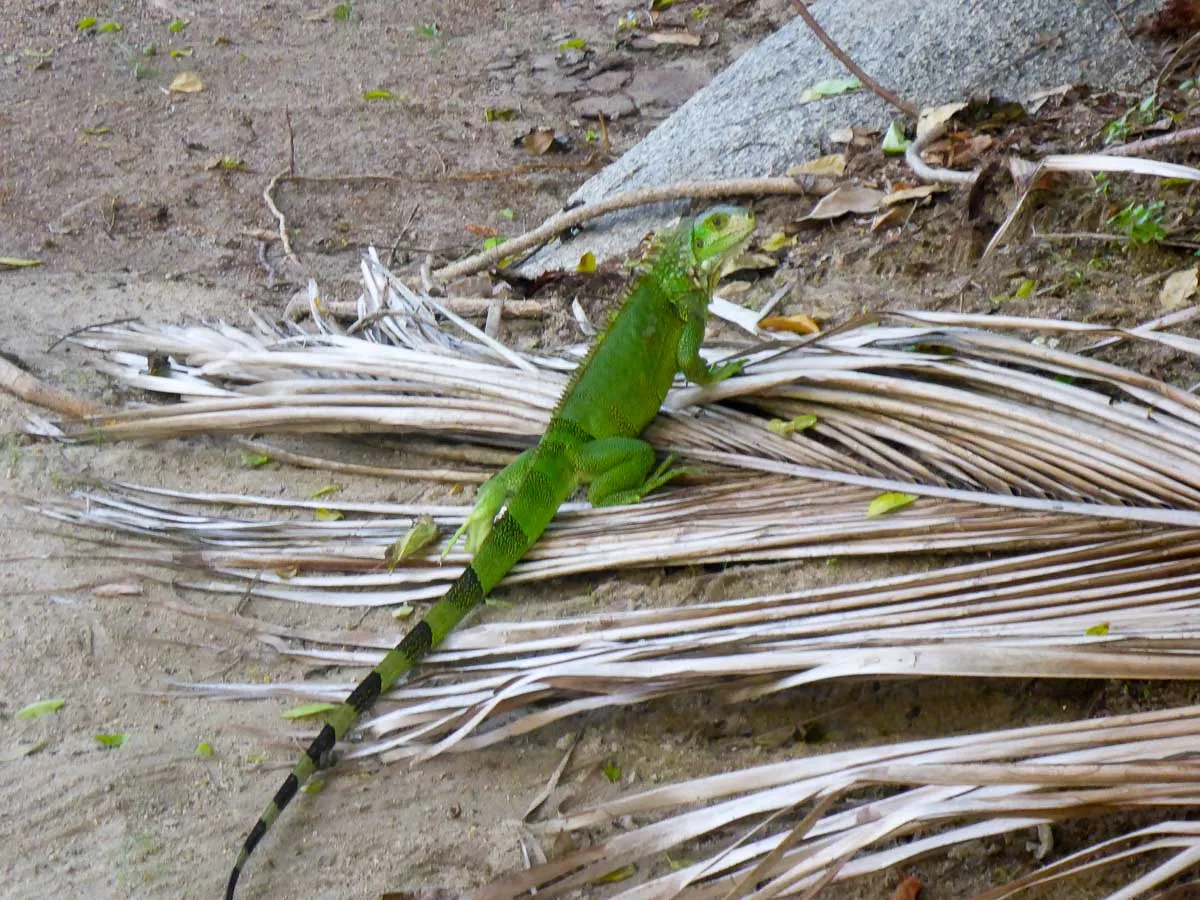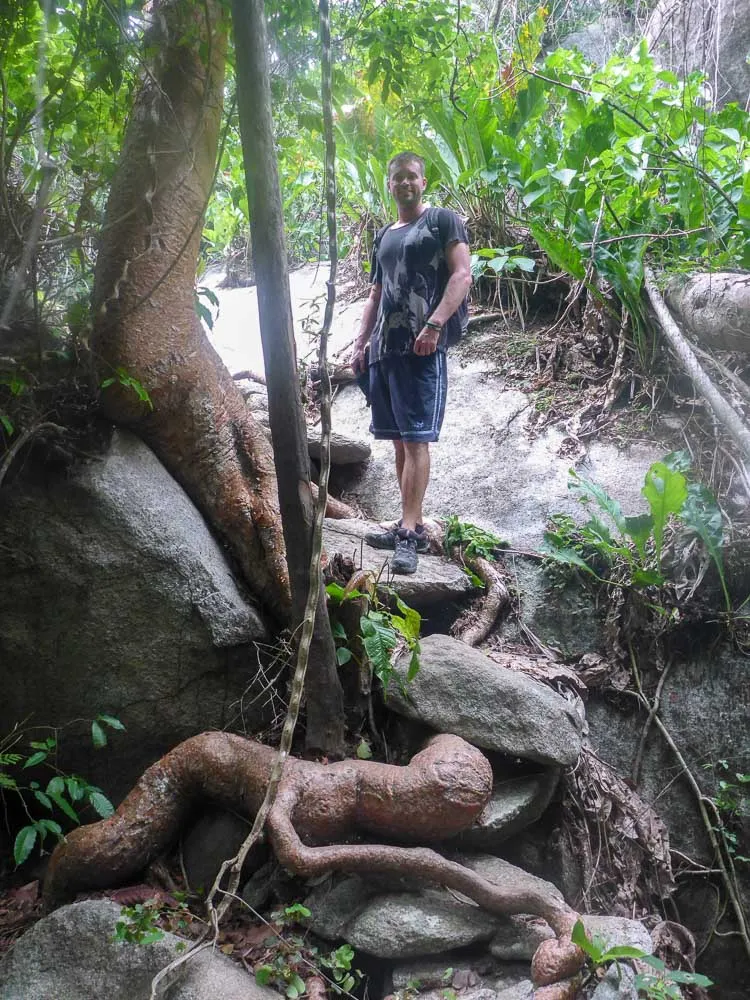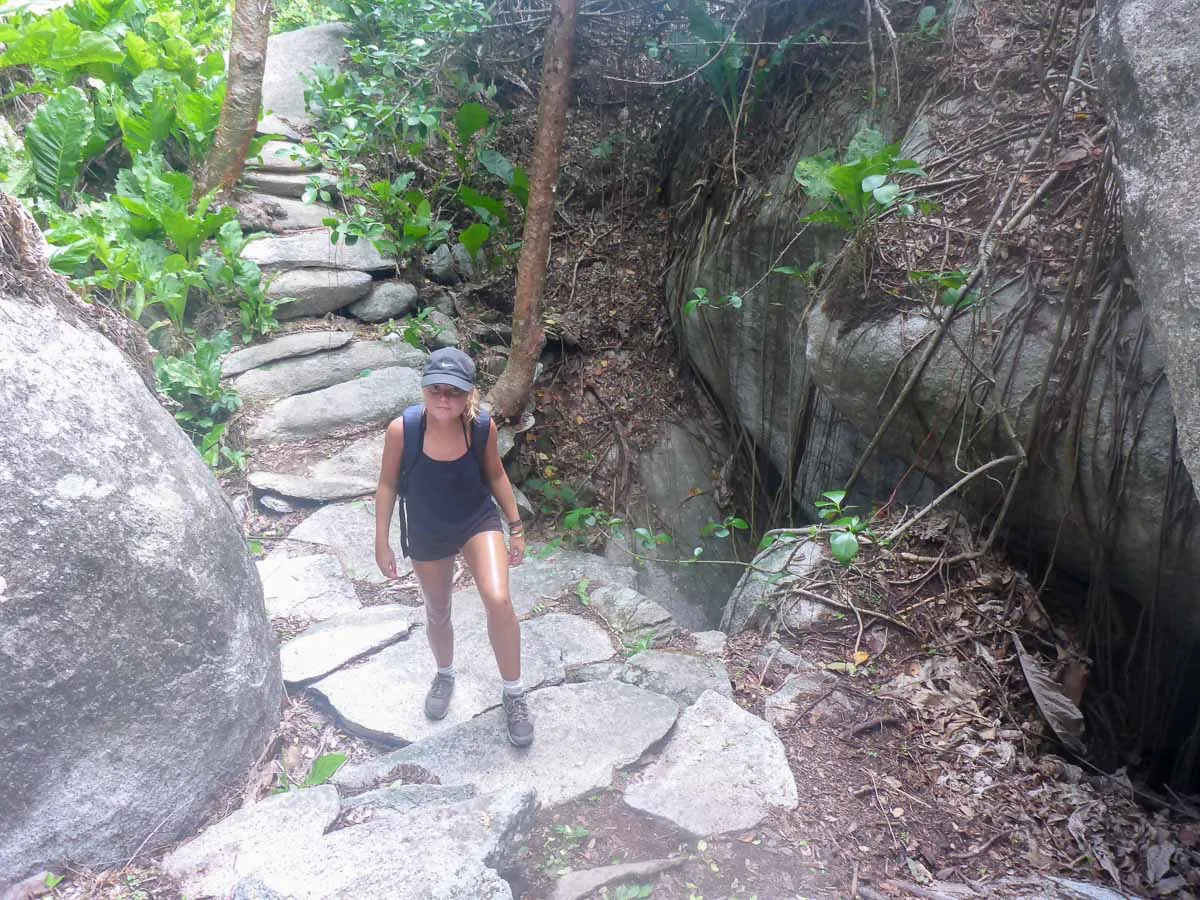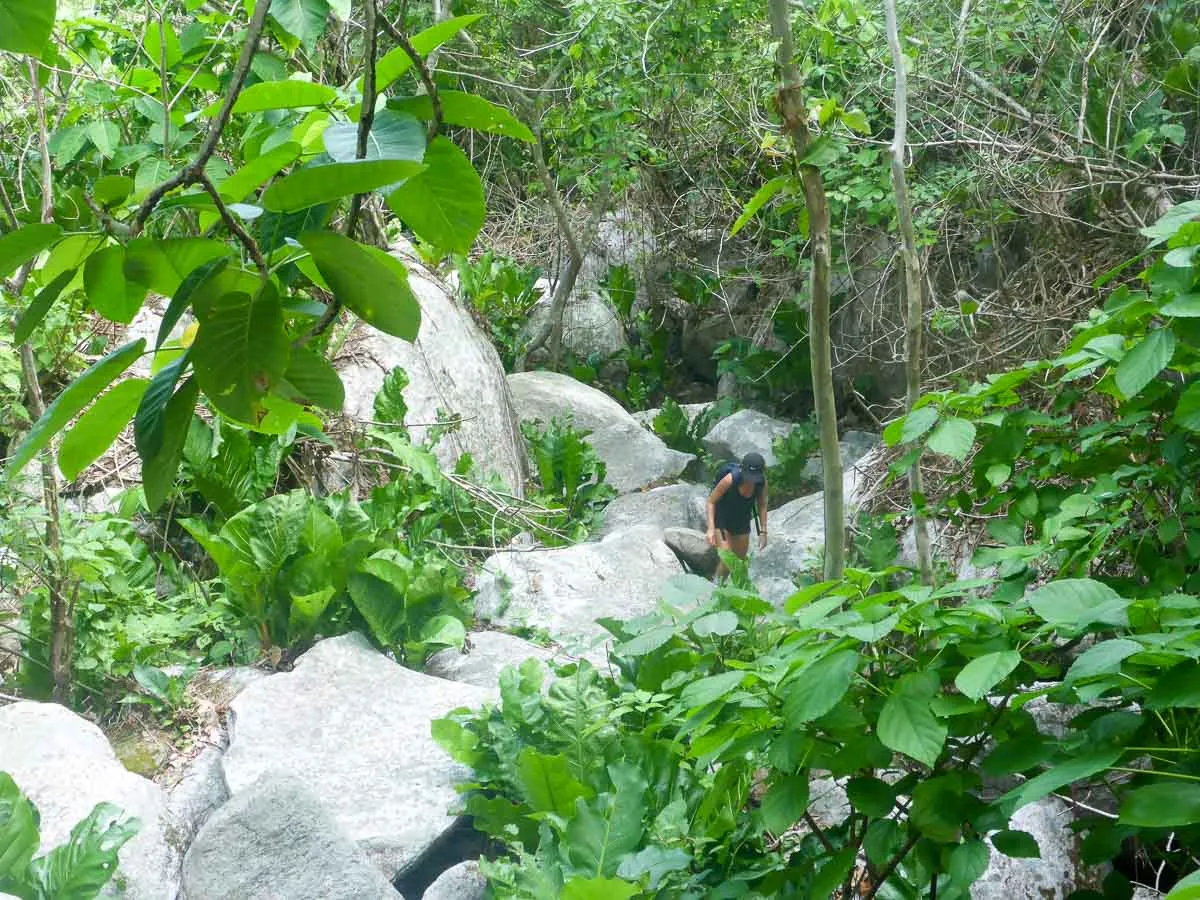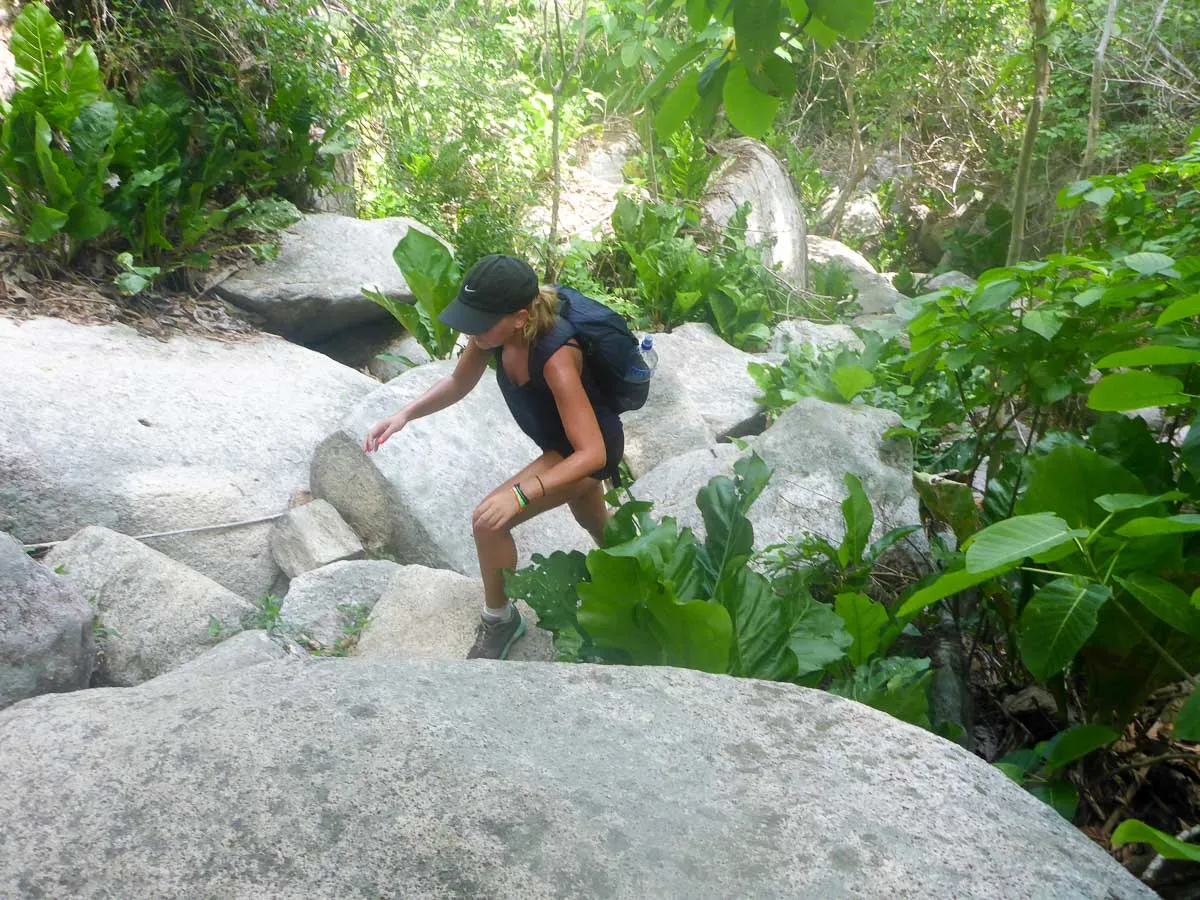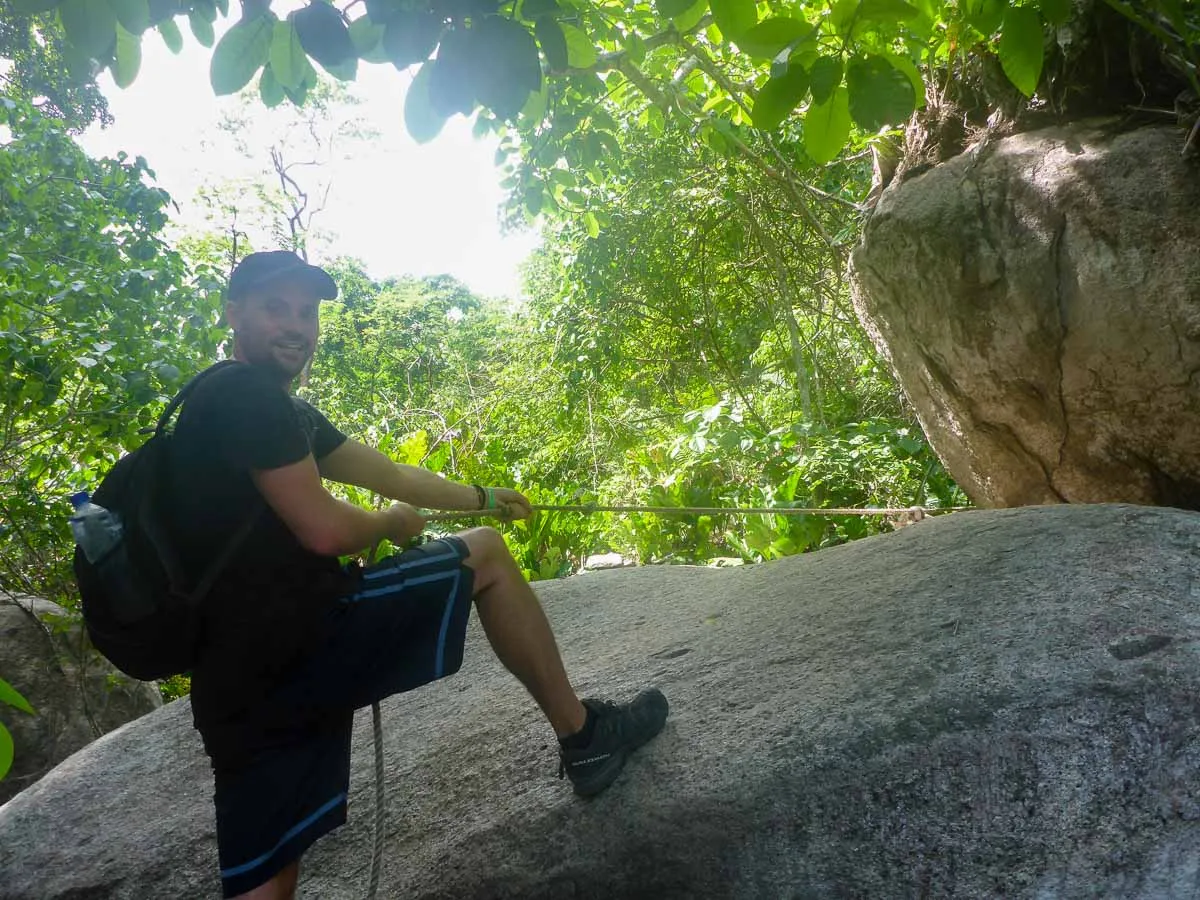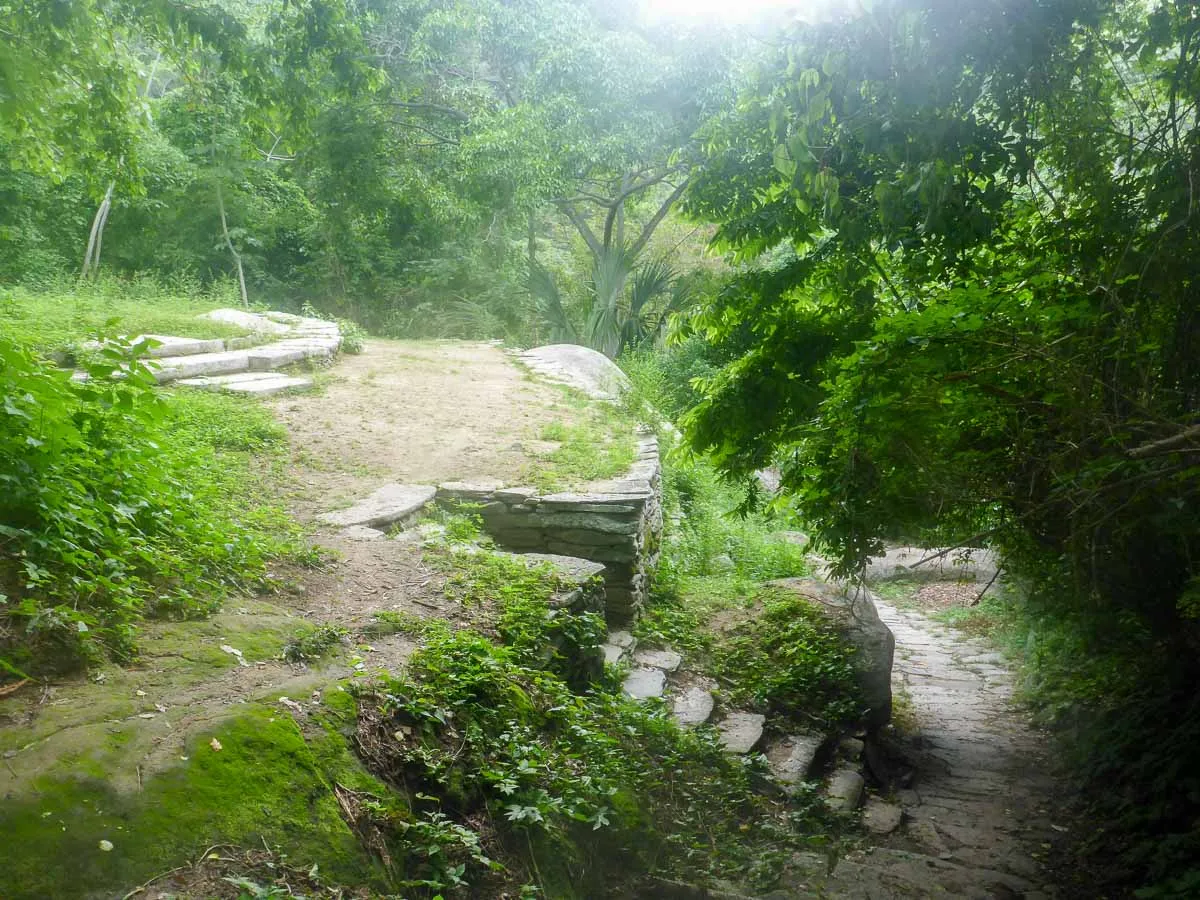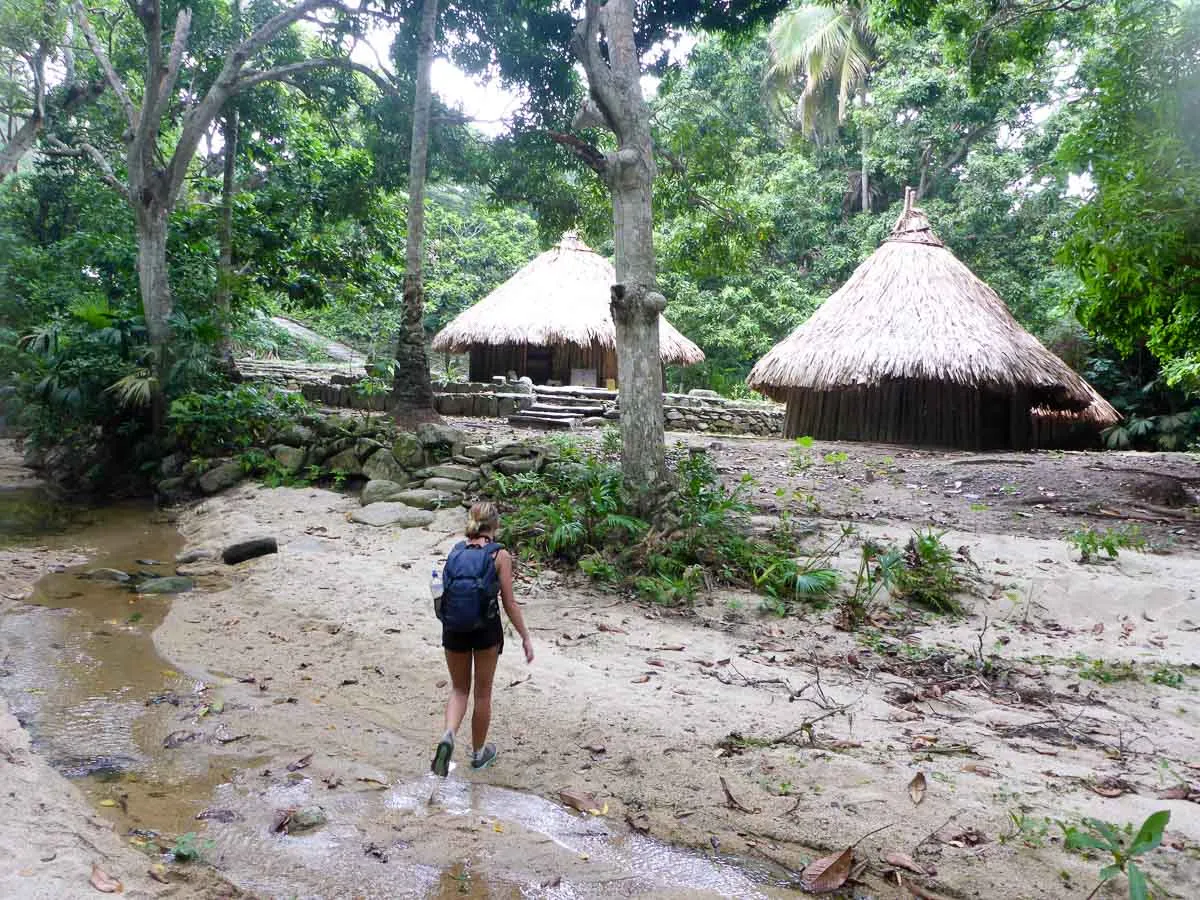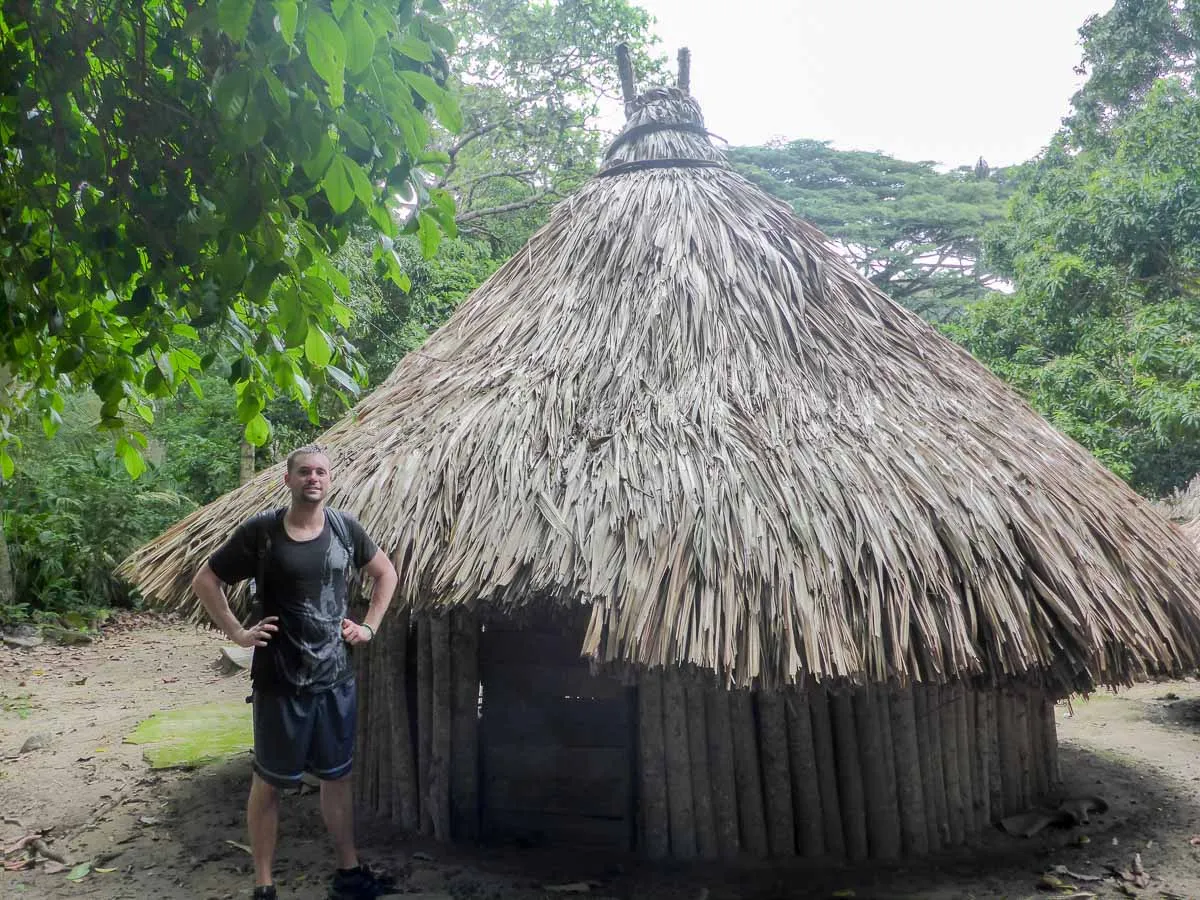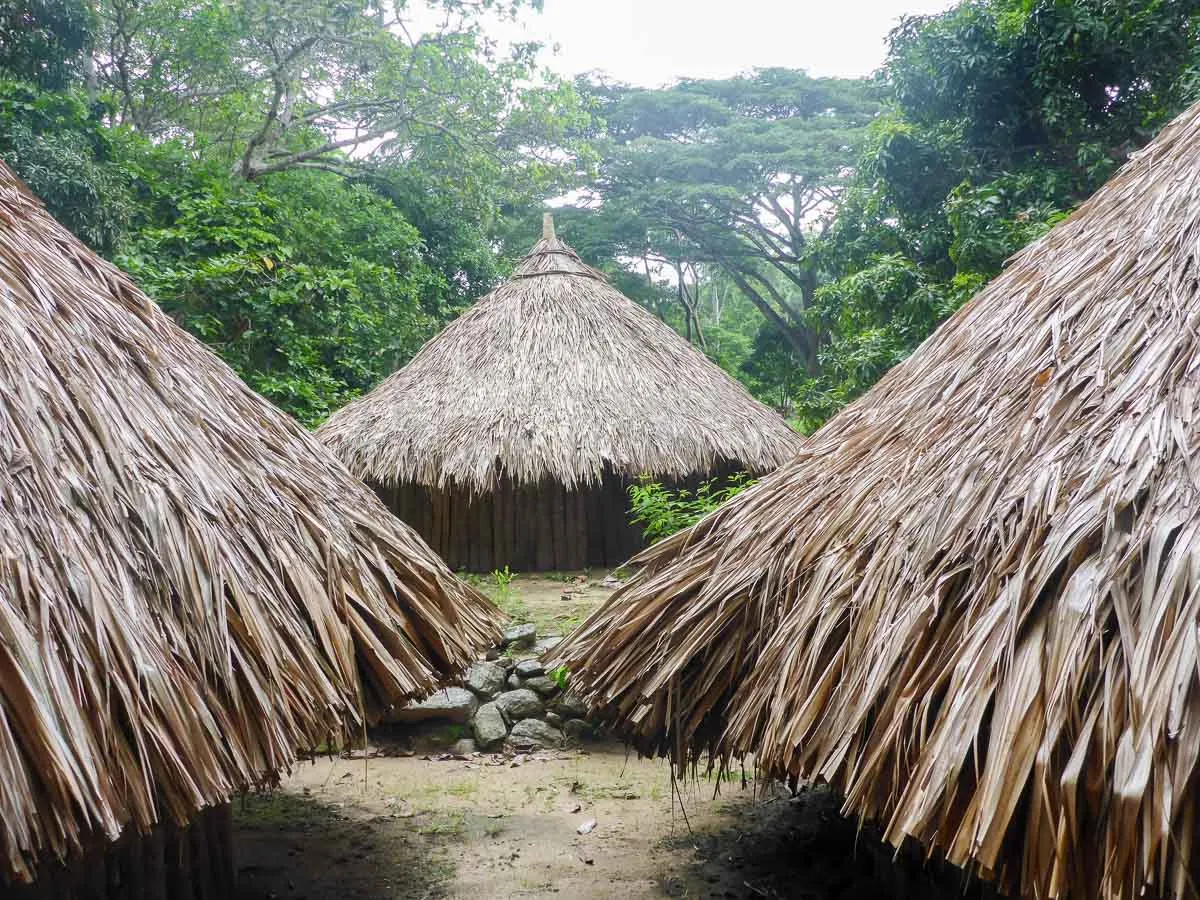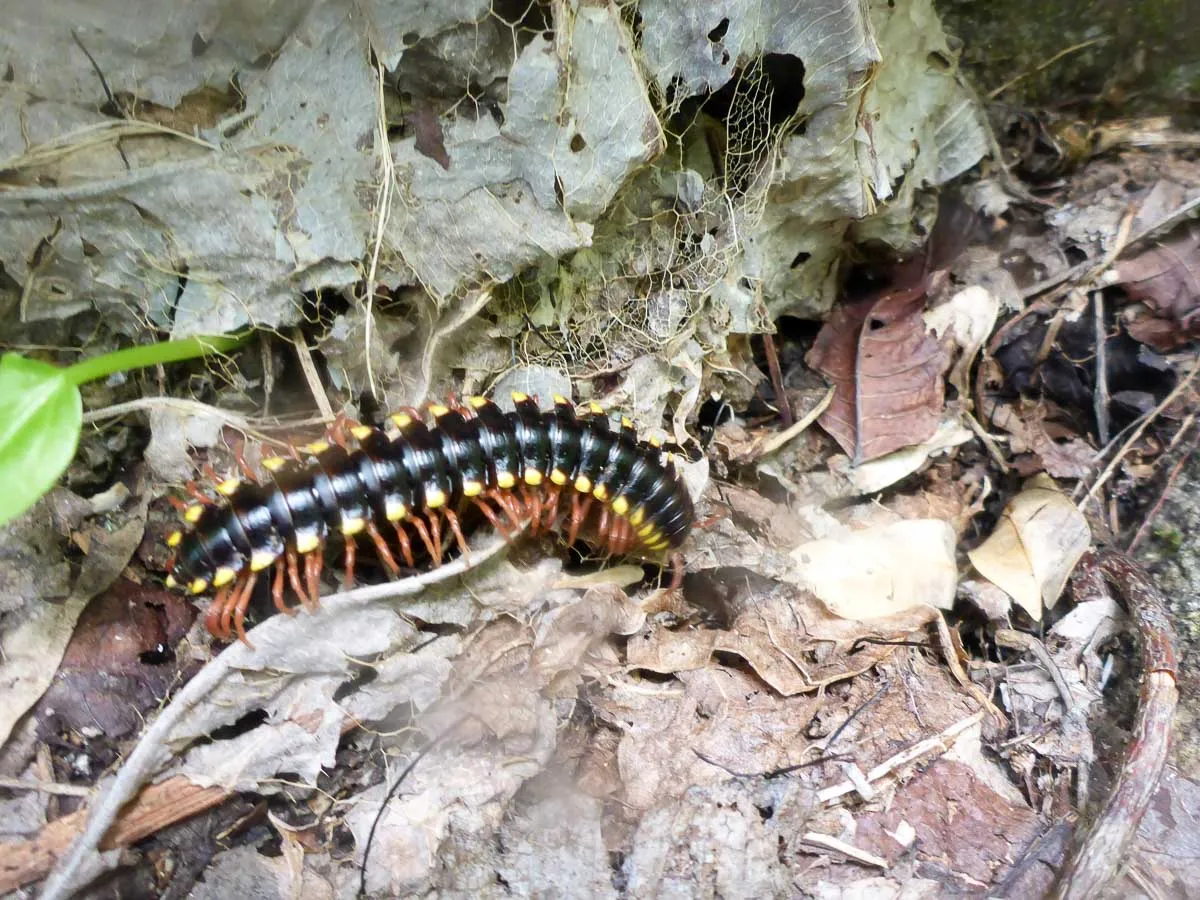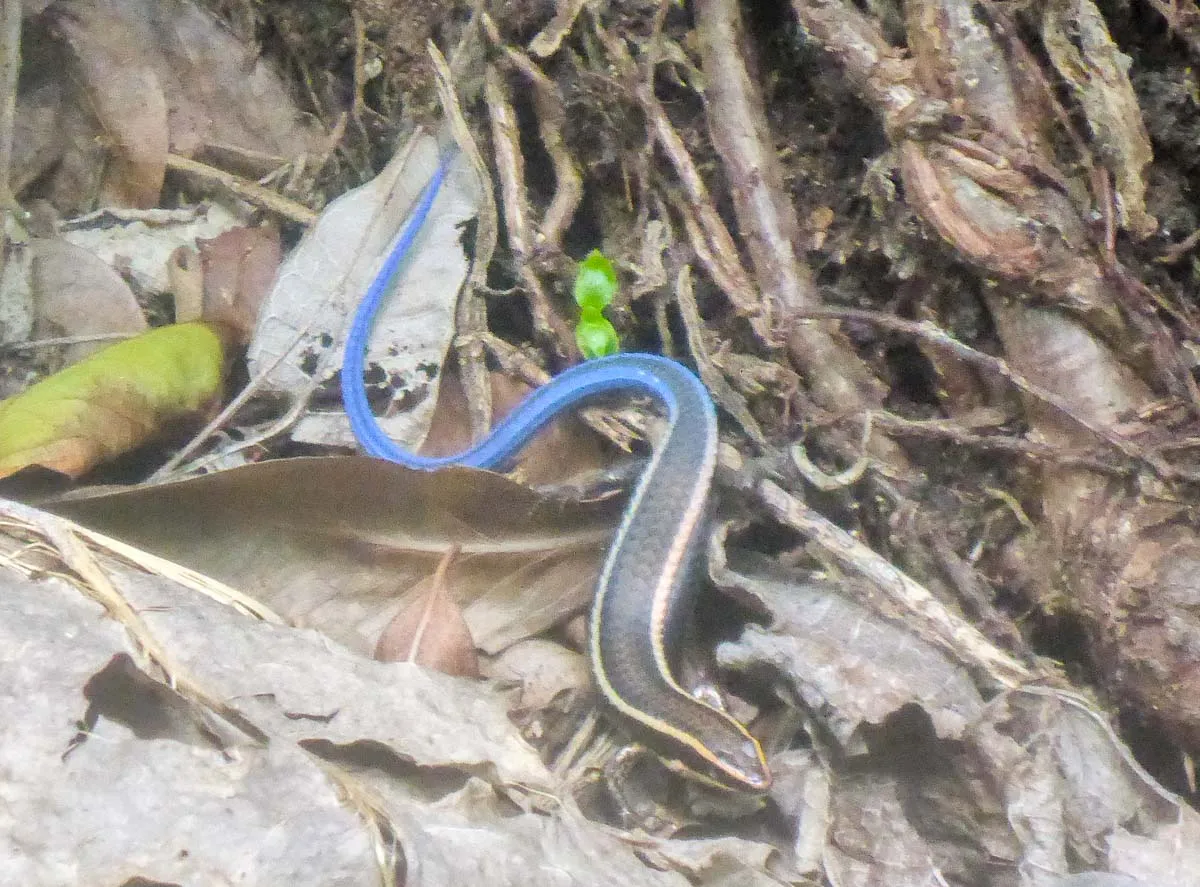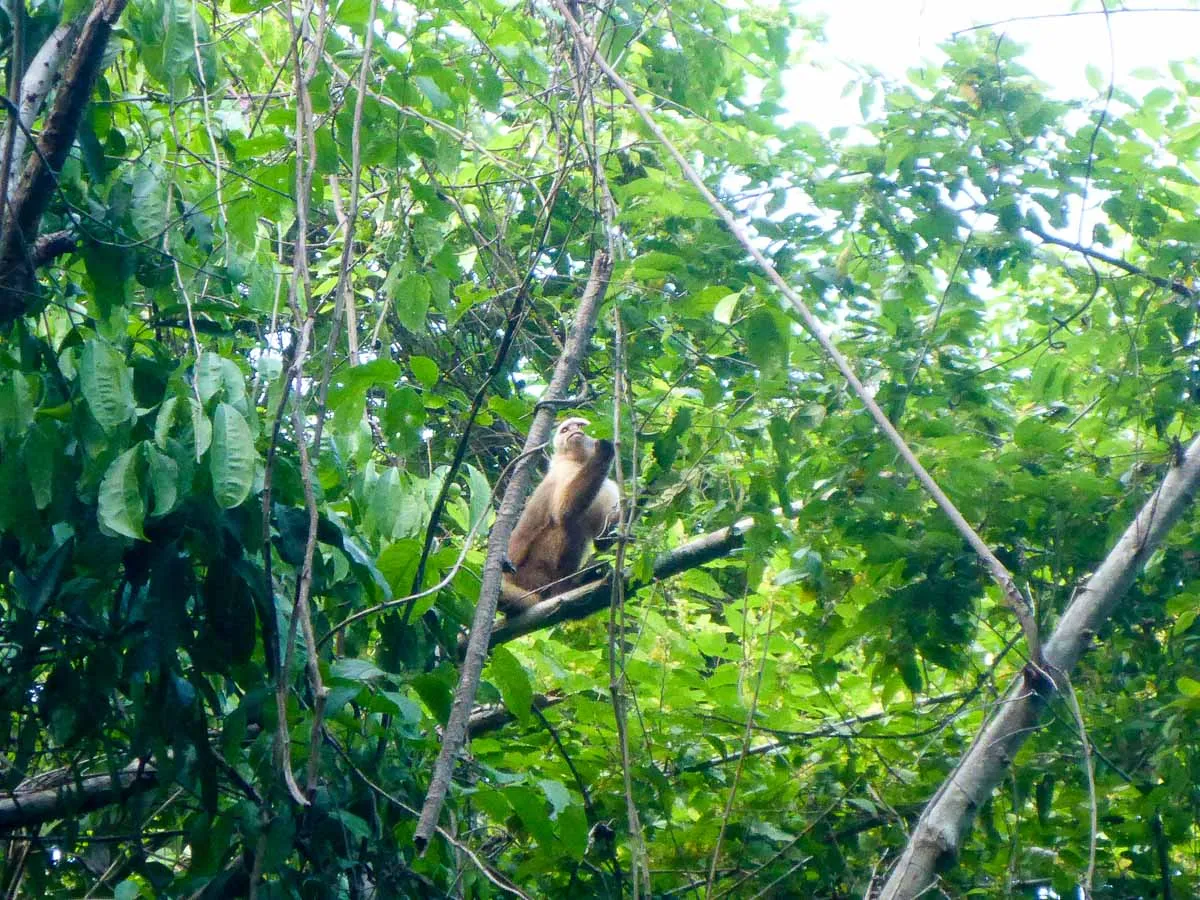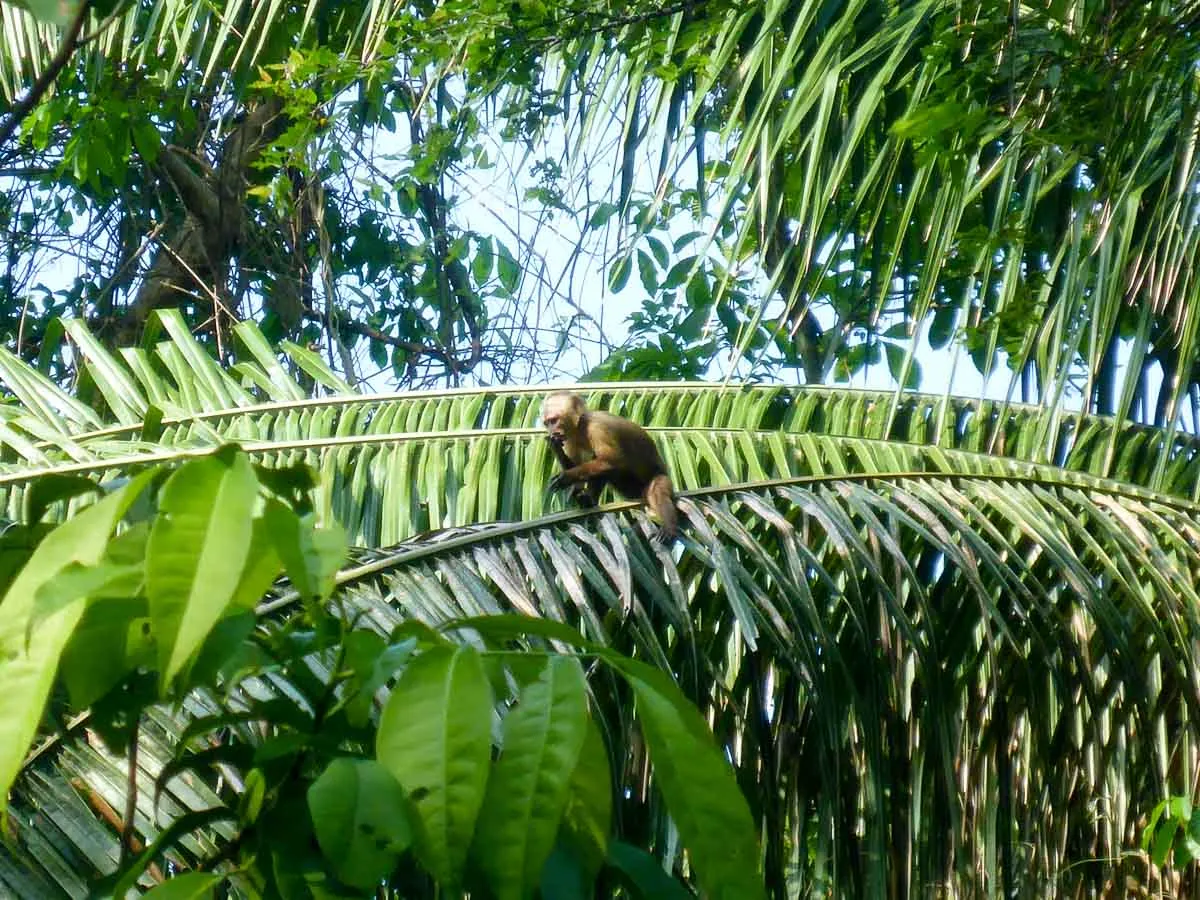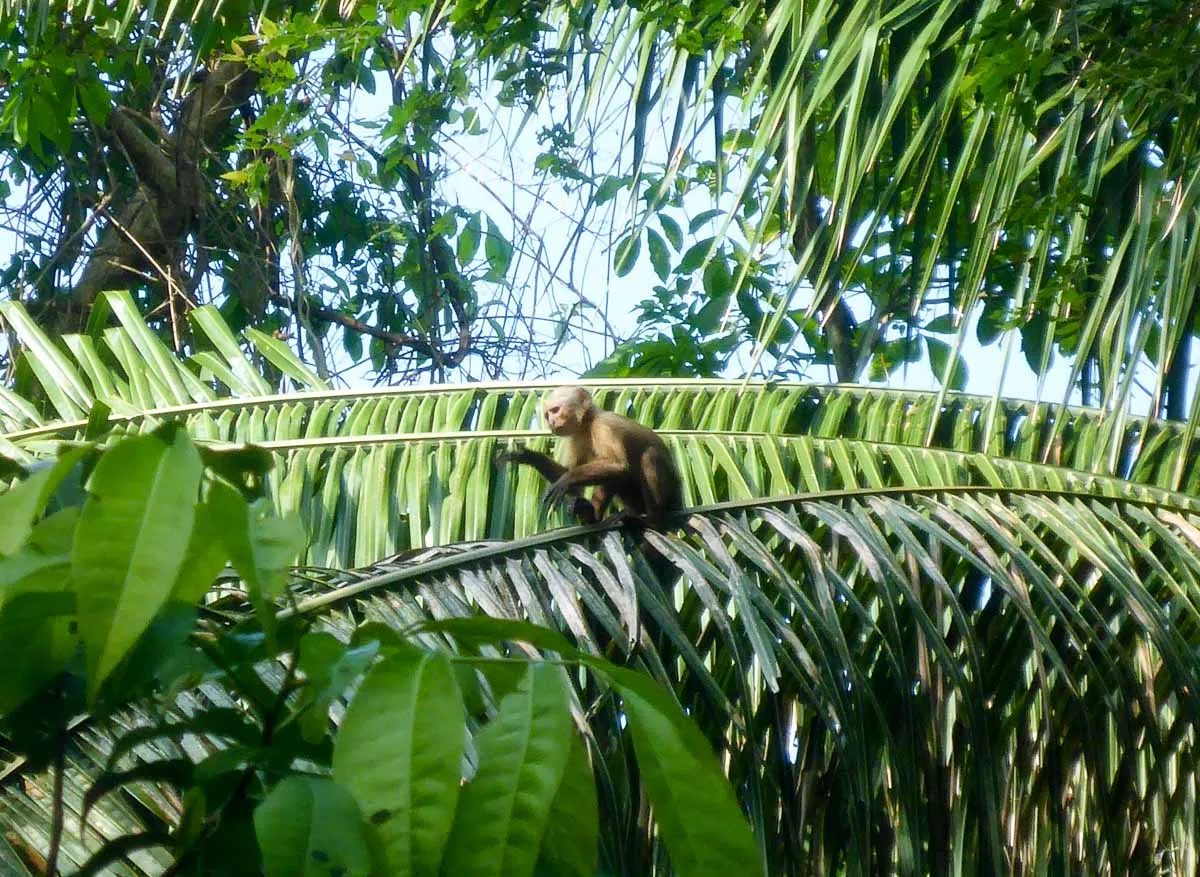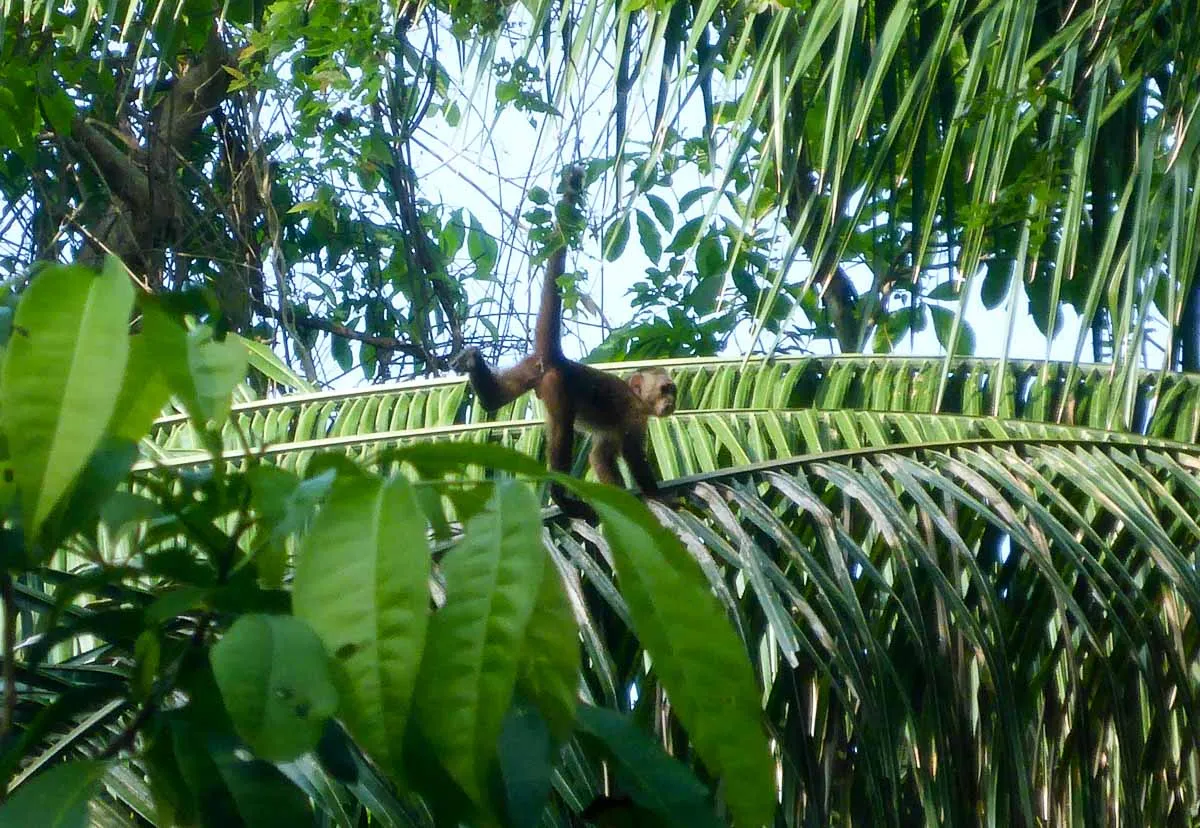Reading back through some of our past blog posts I noticed that we tend to use the word paradise quite frequently. That is because we have been fortunate enough to spend a lot of time on the Caribbean coast which is renowned for its white sand beaches, turquoise waters and palm trees. While we have enjoyed these spots along out travels of Central America none can quite compare to what we experienced at Tayrona National Park on Columbia’s Caribbean Coast line. This place is truly a paradise like no other. As well as the typical Caribbean characteristics this park is also home to an abundant amount of wildlife, amazing forest scenery and waters that glimmer with gold.

Don’t go thinking we had found our riches, the gold in these waters is fool’s gold so not worth the effort of panning through. Although, as the sun catches the small speckles in the water and the butterfly’s glide around it does feel like you have found a truly magical place.

We used the small fishing village of Tagananga as our base for entering the park. The hostels in the area will hold your luggage for you while you go off exploring. The park itself covers 12,000 hectares of land and 3,000 hectares of sea, along with the unspoiled beaches there are large areas of jungle which surround the Sierra Nevada de Santa Marta.
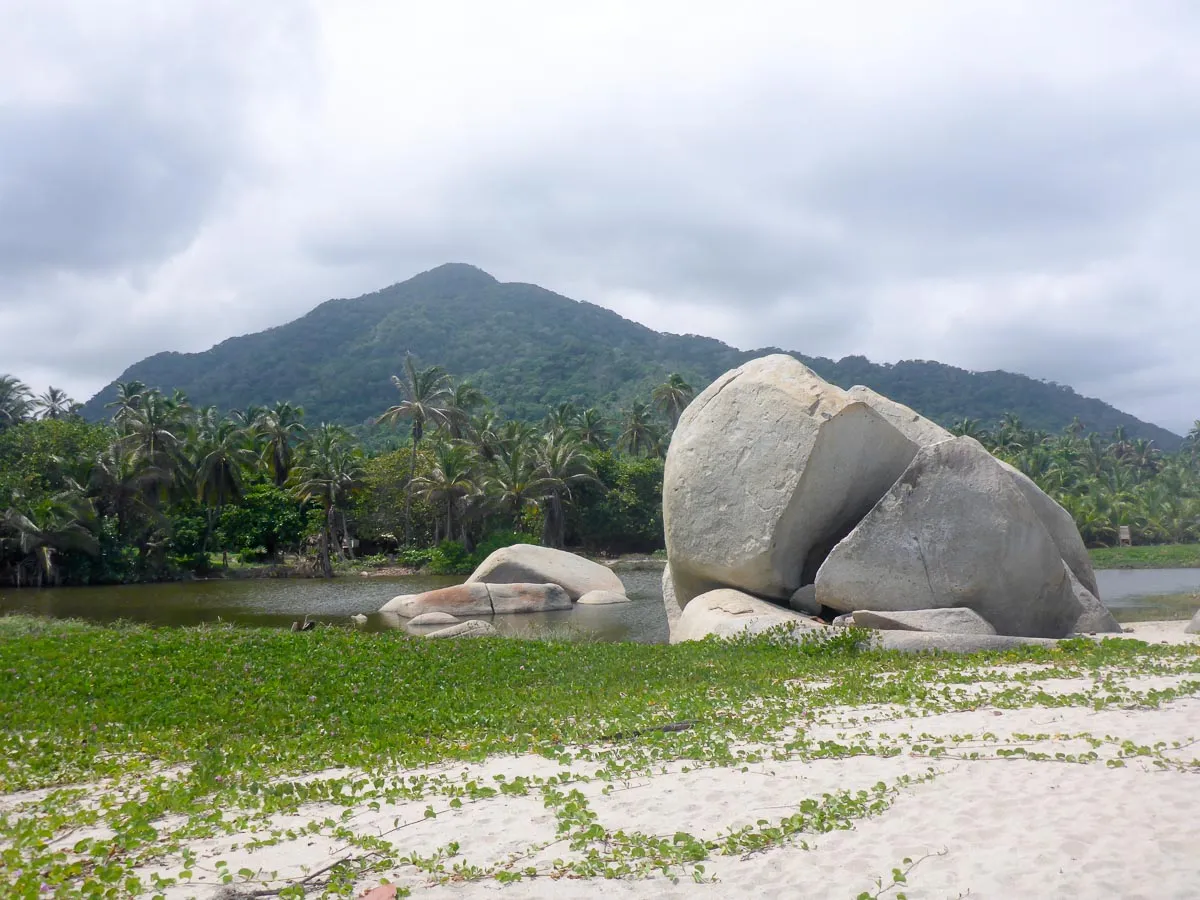
We caught the bus from Taganaga at 8am, arriving at the park just after 9. At the initial entrance visitors are asked to watch an information video about the park before they are allowed to purchase their ticket. You are required to show identification when entering the park so it’s important not to forget your passport. All bags are then searched for alcohol and drugs, as the police officer searched my bag he informed me with a smile “drogas son malas” (drugs are bad). Always good to know.
We were then driven a further 10 minutes into the park where the trailheads begin. The beaches and campsites can only be reached by walking along the coastal trail which takes 1-2hrs. After being on the walk for less than 2 minutes we had already spotted our first wild animal, a small, but cautious looking, baby alligator.

This was shortly followed by some huge caterpillars and millipedes.
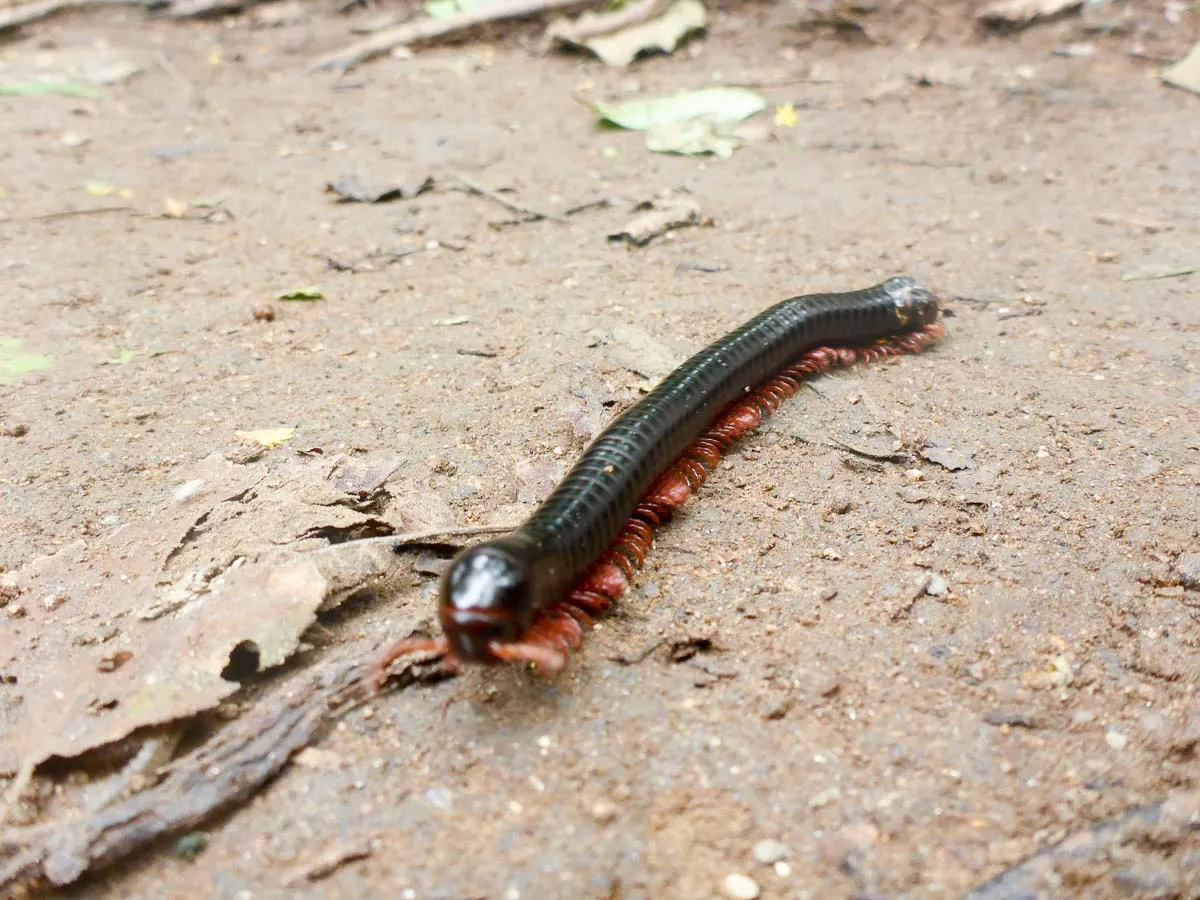
The scenery on the trail is spectacular but the heat can be a bit overwhelming. When we reached our first view of the beaches at the top of a cliff side it felt incredible to take in the scenery and catch much appreciated breeze.
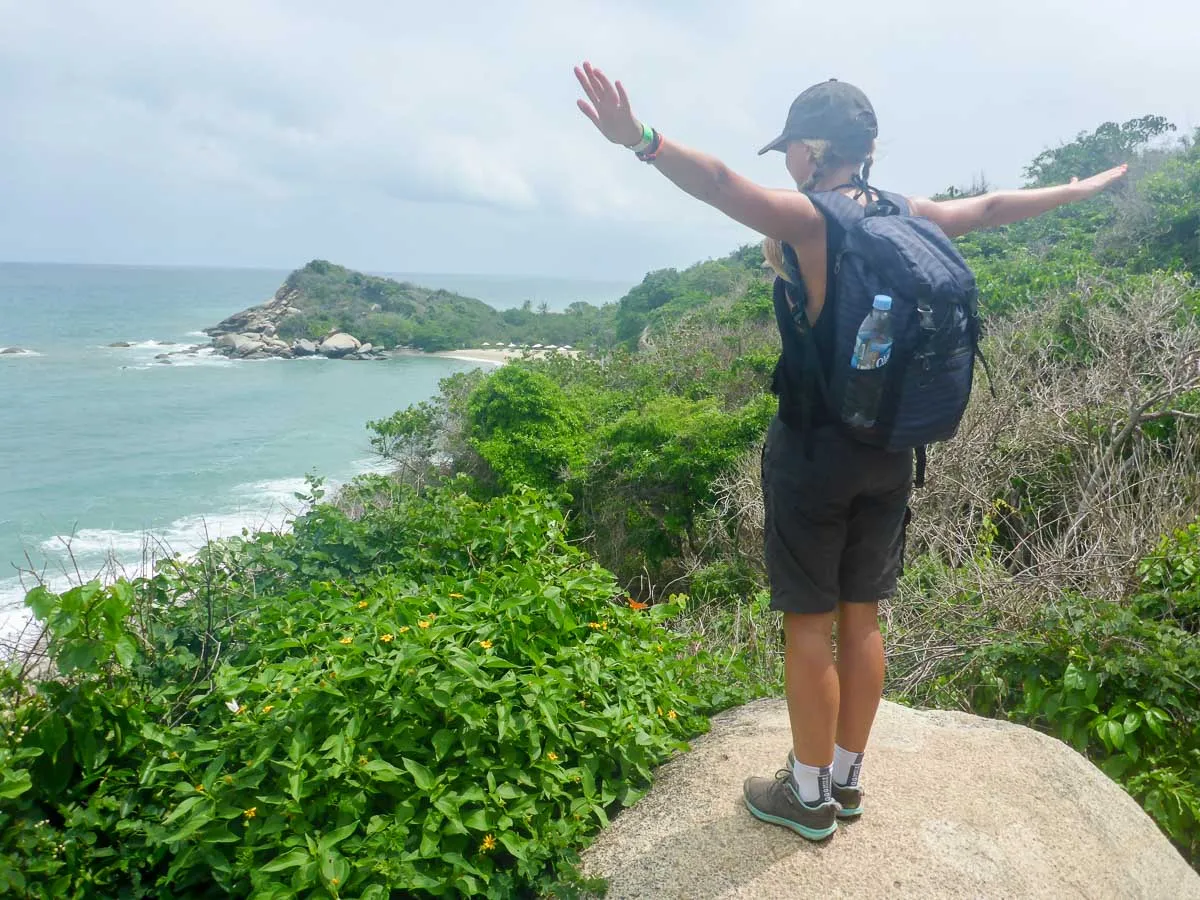
We spent much of our first day exploring the beaches and playing in the small areas of water which were safe to enter. The sea is notoriously dangerous along this coast and the undercurrents have killed around 100 tourists so far. As night fell and the mosquitos began to take over we headed back to our chosen campsite for a few beers and an early night. On our way we got a chance to see our neighbours, a group of tico monkeys.
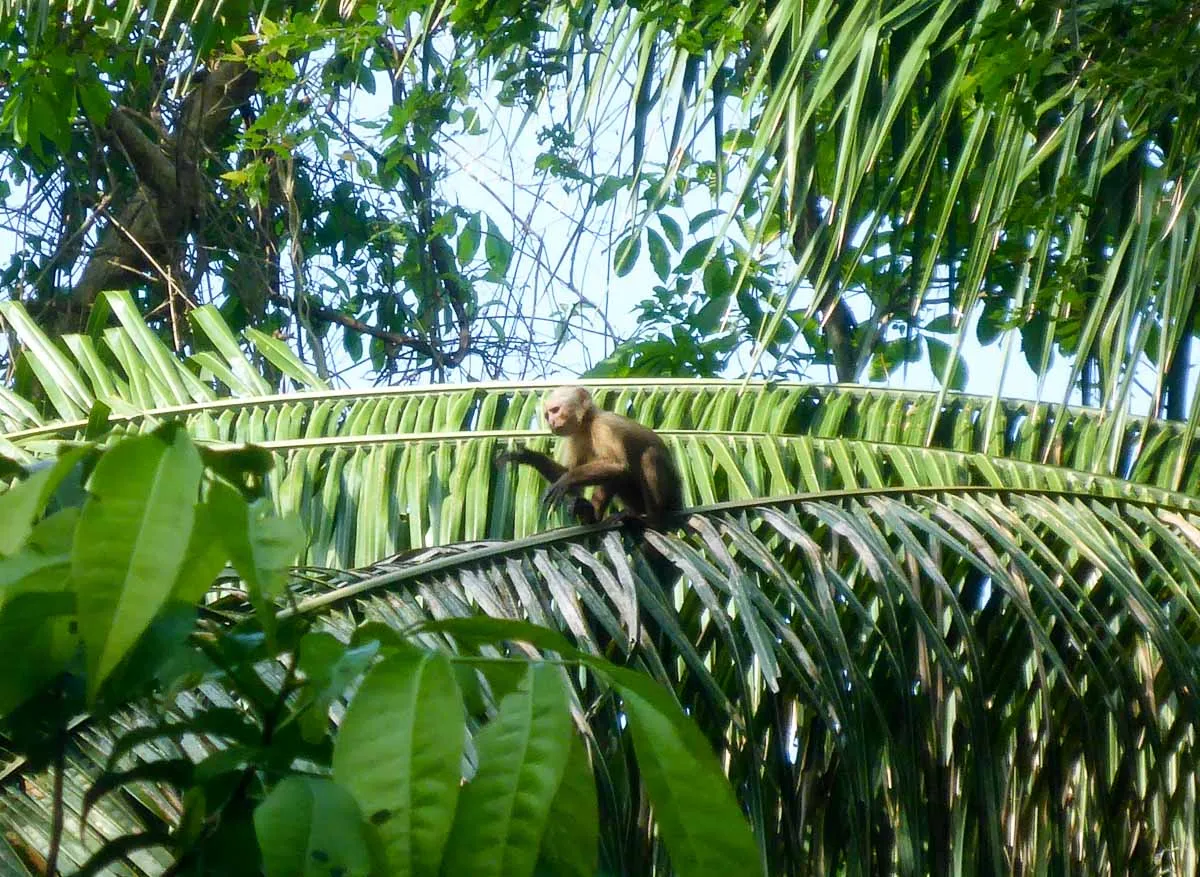
Unfortunately our dreams of a quite campsite were shattered when a game of dominos turned into a full blown party with very load Spanish music till the early hours of the morning. A few hours after the music was turned off it was the turn of the animals to wake us up. Insects, boars, monkeys, chickens and hundreds of birds all chipped in as our alarm clock.

We didn’t want to lie in anyway as there was still so much more of the park to explore. On our second day we decided to walk the scenic path inland, heading uphill to the pre Columbian town of Pueblito which still has areas of paths and foundations visible from this ancient settlement.
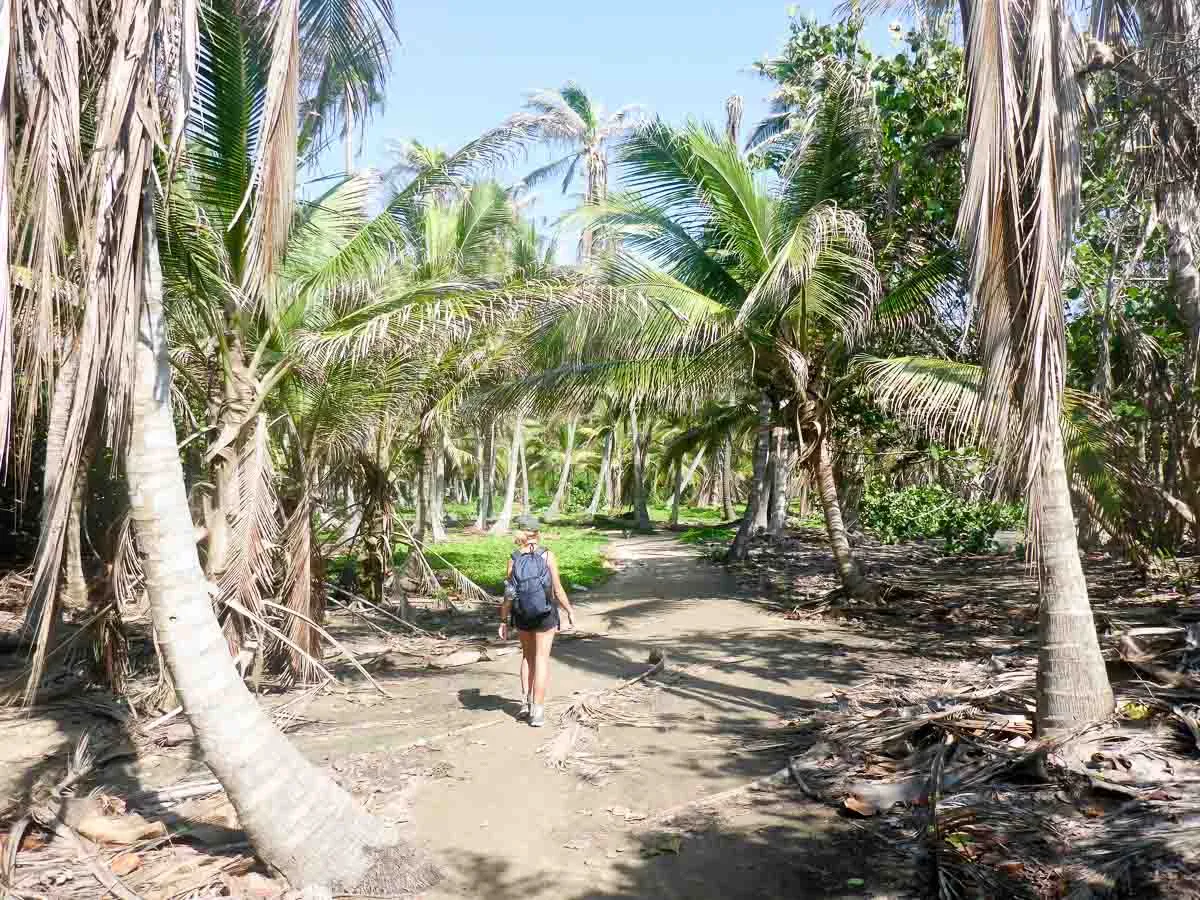
The walk was more difficult than we had thought. Climbing continuously uphill and scrambling over boulders in the heat and humidity was a challenge but we got to see some fantastic wildlife including this brightly coloured salamander.

Although it only took an hour and a half, reaching the top felt like an achievement. As we stood there, bright red, ringing the sweat out of our clothes we were passed by a group of Columbian school children who laughed at us as they walked past, bone dry, looking cheerful. The heat clearly doesn’t affect the locals the same as it does to us English folk.
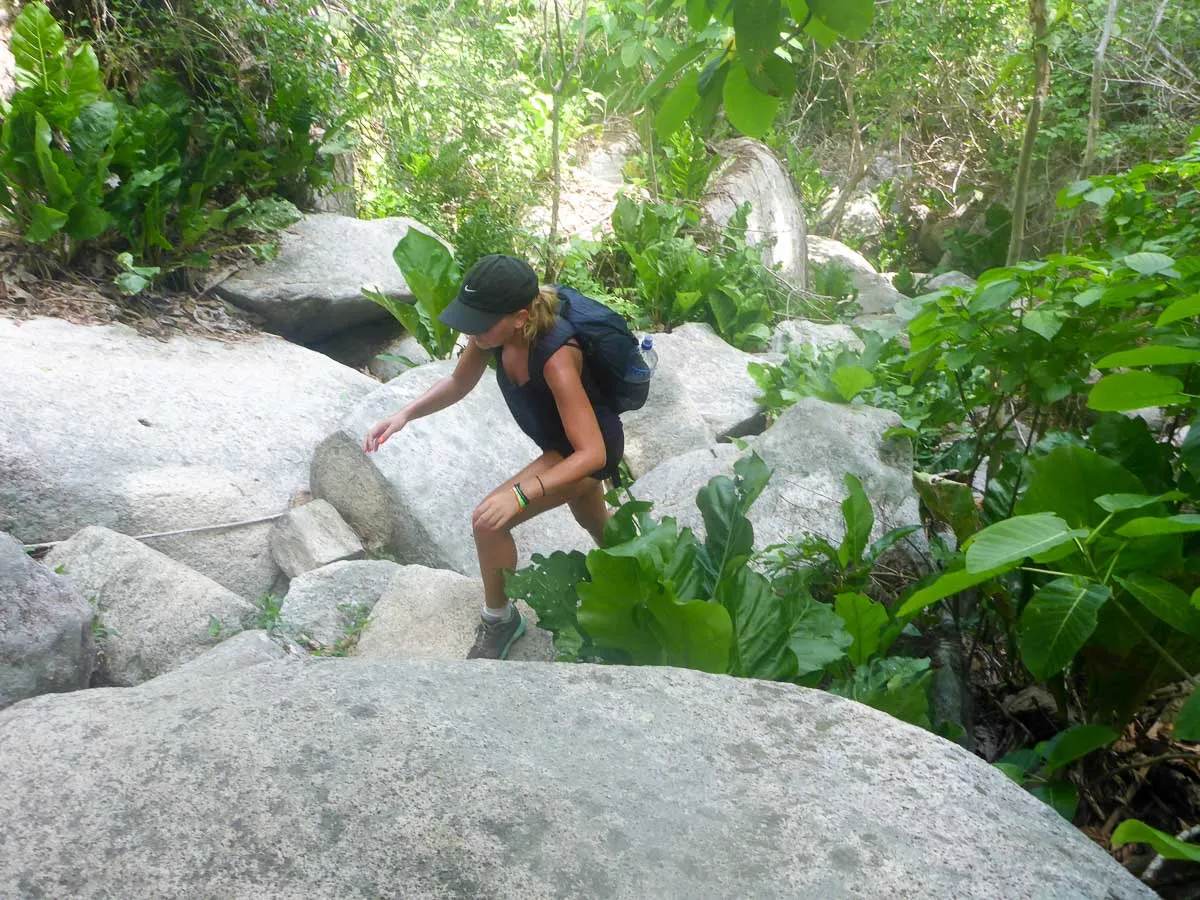
After a short break we headed back along the trail back towards the entrance where we could pick up a bus to Taganaga.
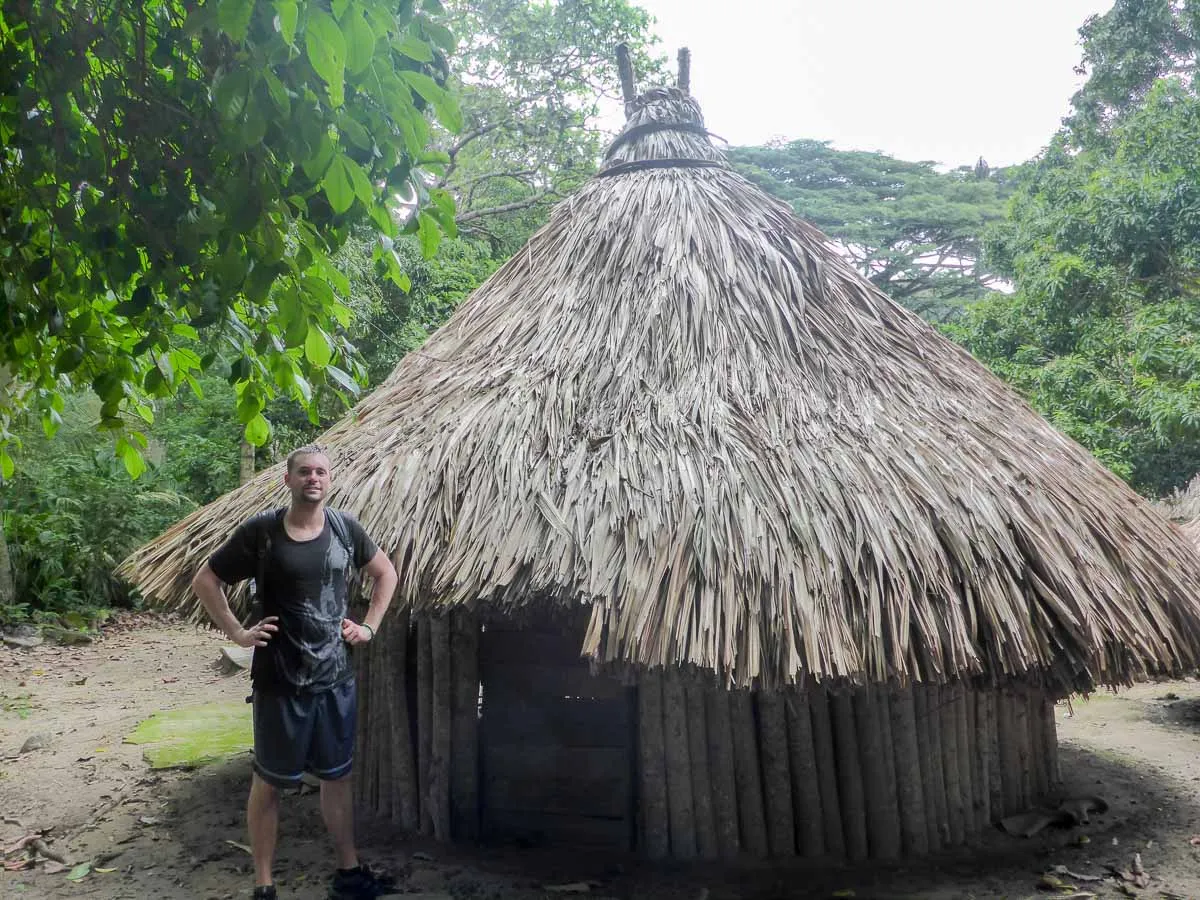
We were lucky to have been able to enter the park as we found out when we arrived it was being shut down for the whole of November for the locals to carry out ceremonies and restore the park. It is a popular tourist attraction in Columbia but unlike other national parks we have been to the wildlife still seem to dominate the area, hopefully, with the will of the indigenous people, they will be able to maintain this. We would have to advise anyone wanting to visit the park to stay overnight to fully experience the area, yes you will get bitten by mosquitos, but these bites will only last a few days, the memories of this magical tropical nirvana will last a lifetime.

